Complimentary worldwide shipping on orders over $400 · No import tariffs for most countries
Complimentary worldwide shipping on orders over $400 · No import tariffs for most countries
The Library gathers the written works of Lucas Varro — journals of the temples, meditations on myth, and volumes of shadow and silence. Here words stand beside images as offerings: essays, retellings, and field notes from Angkor and beyond.
Within these shelves you will find many rooms — journals of Angkor, mythic retellings, meditations on apsaras, and essays on the meaning of sacred stone. Wander chronologically, or enter by theme.
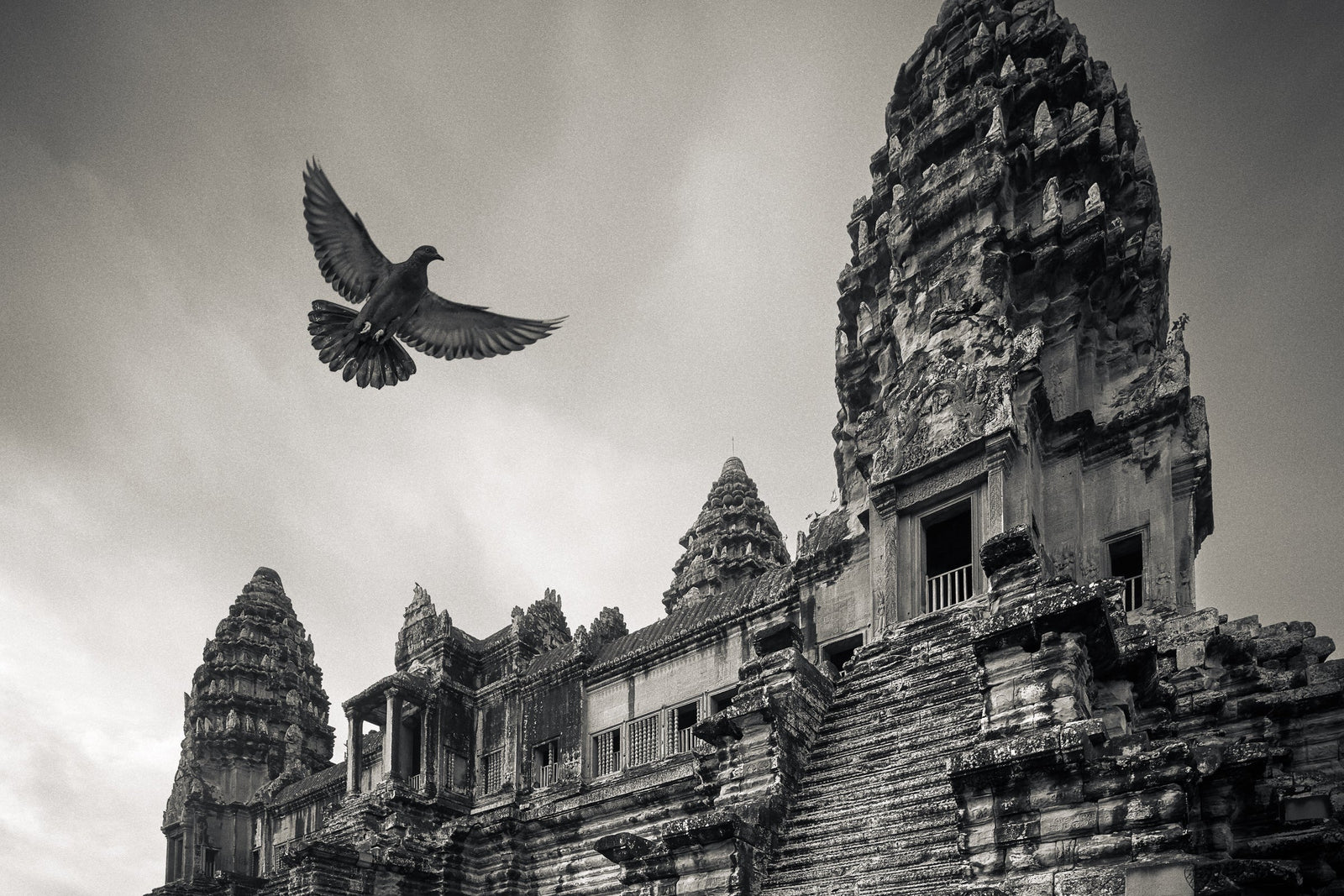
Breath Between Stone and Sky
1 min read
You arrive in silence. A wing lifts. You do not follow it—you follow what it leaves behind. Stone, shadow, and the hush that holds everything.
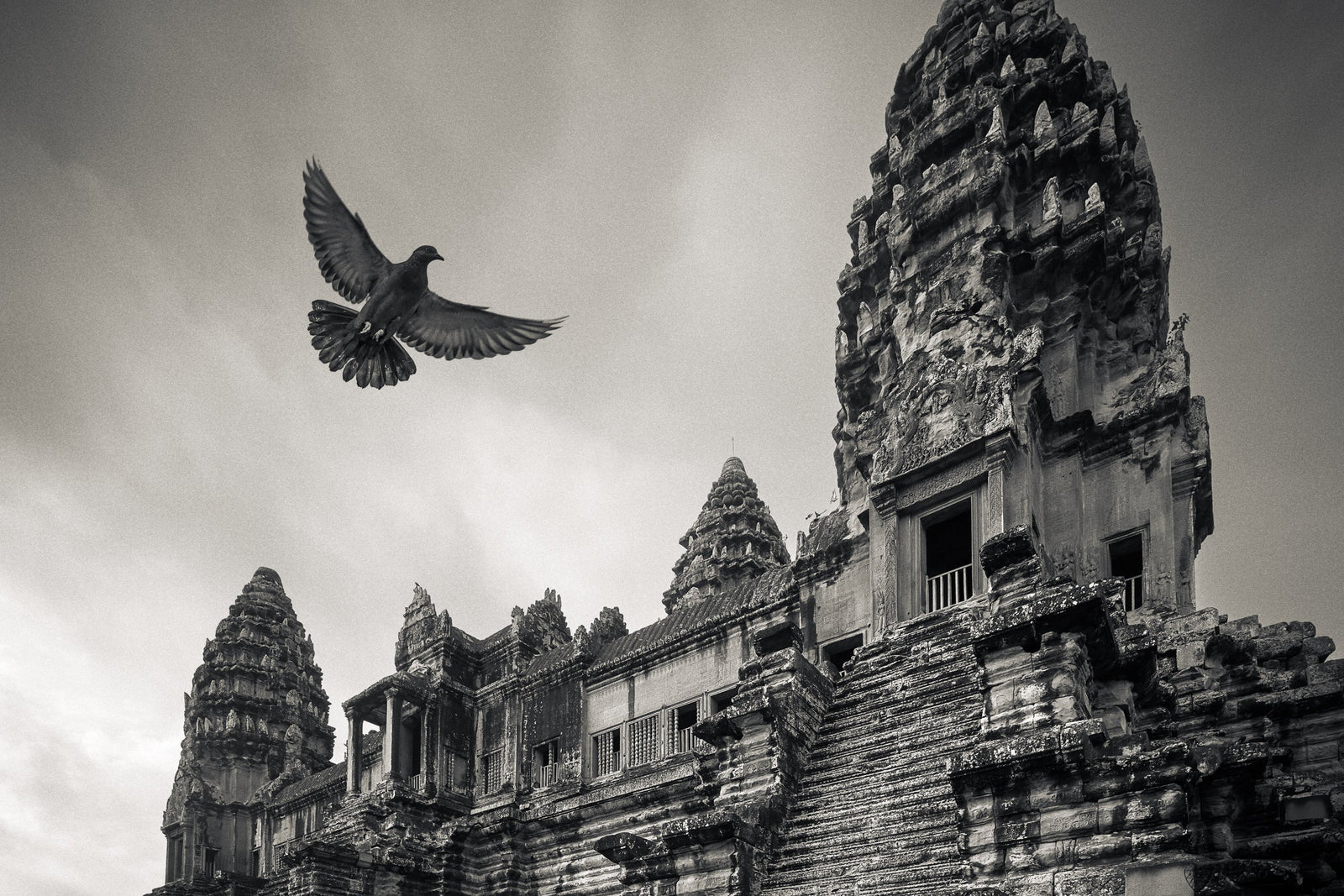
What the Stone Carries
1 min read
Stone remembers what light forgets. A bird rises. You remain. The courtyard gathers the breath of all that has passed and all that is about to.
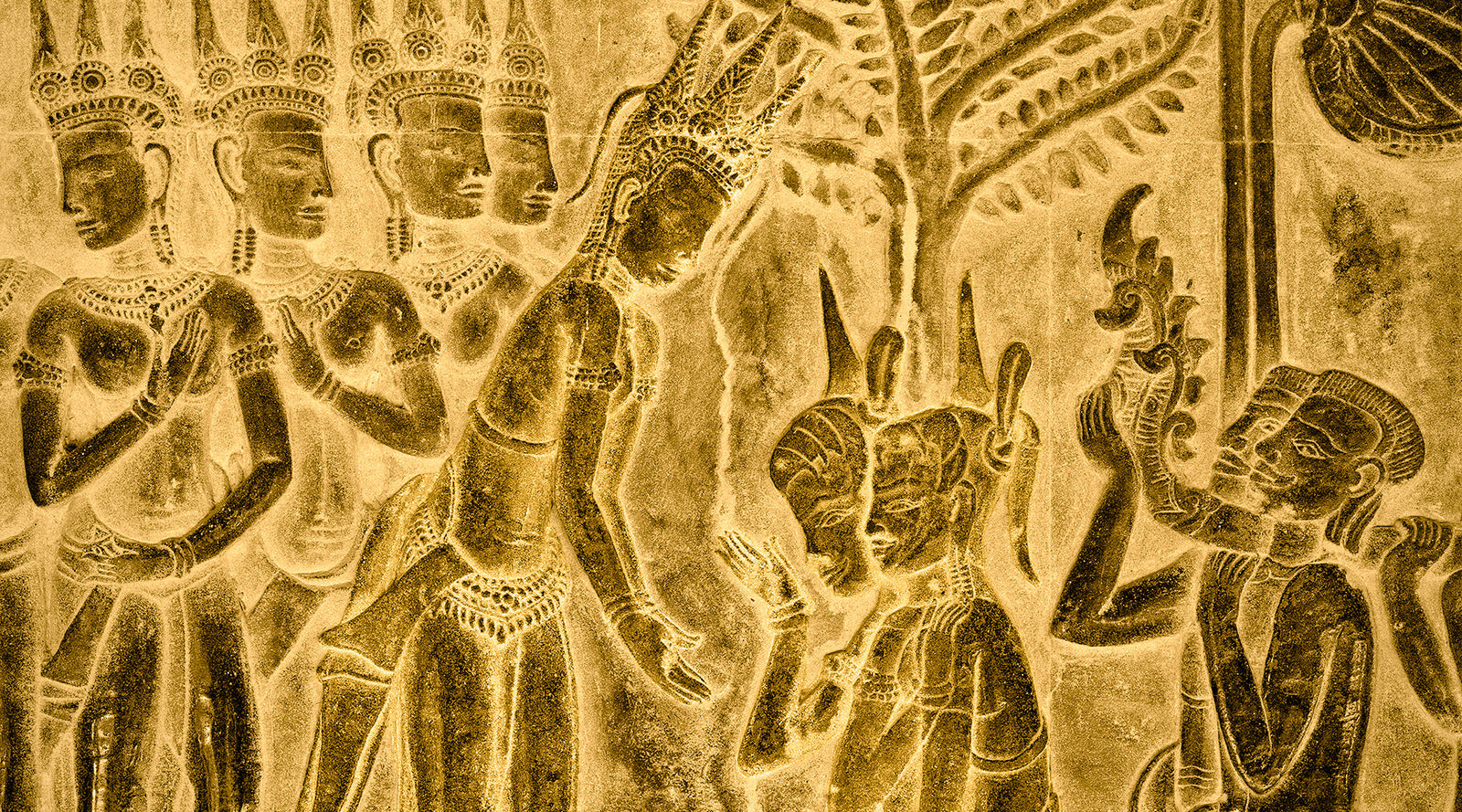
In the Pause Between Two Gestures
1 min read
She offers nothing—and yet the light comes to her. In this breath between hands and presence, even stone listens for what cannot be named.
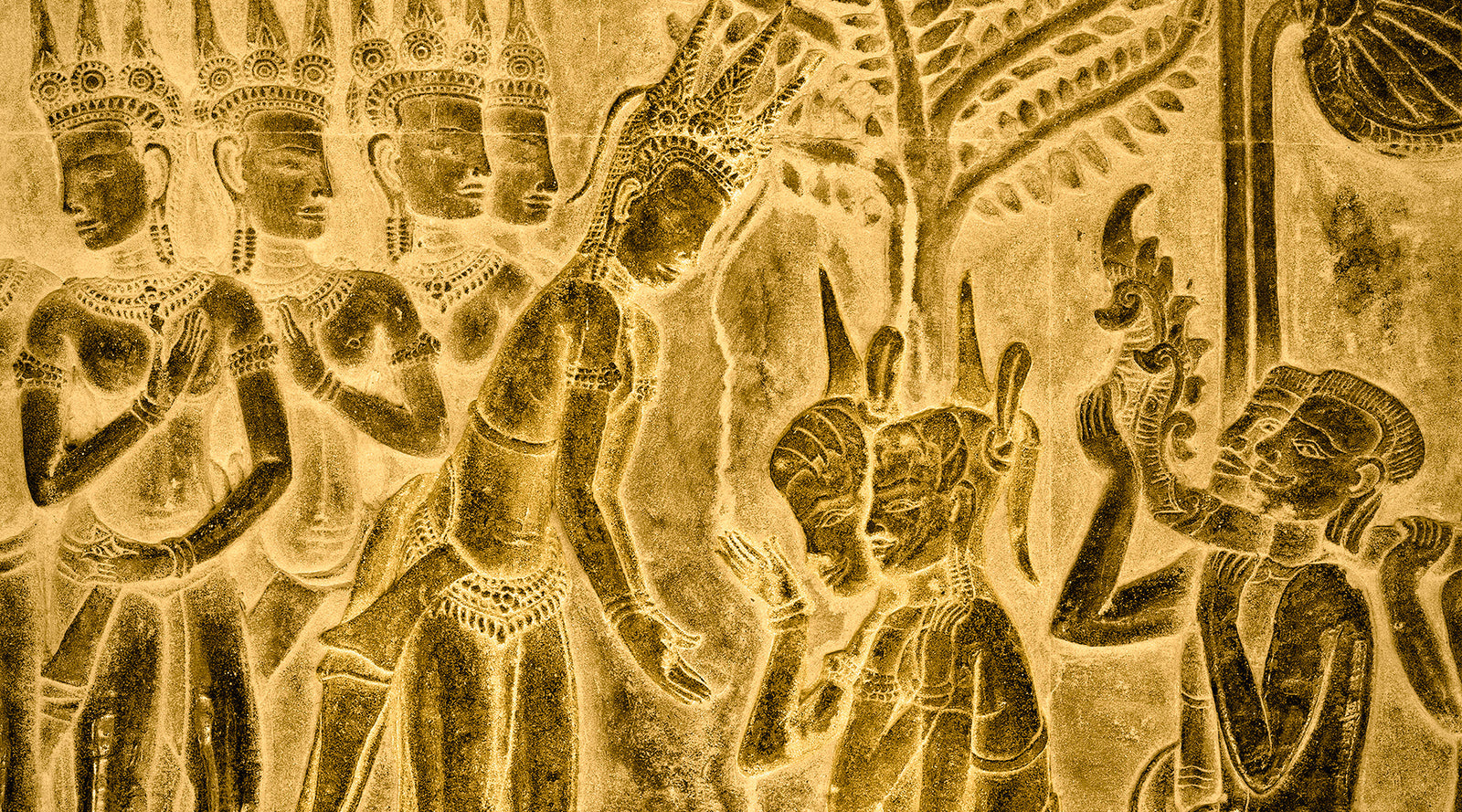
Where Stillness Carries the Gift
1 min read
A princess waits, the women reach, and the gift cannot be seen. In this hush, it is the silence between them that reveals what has already been received.
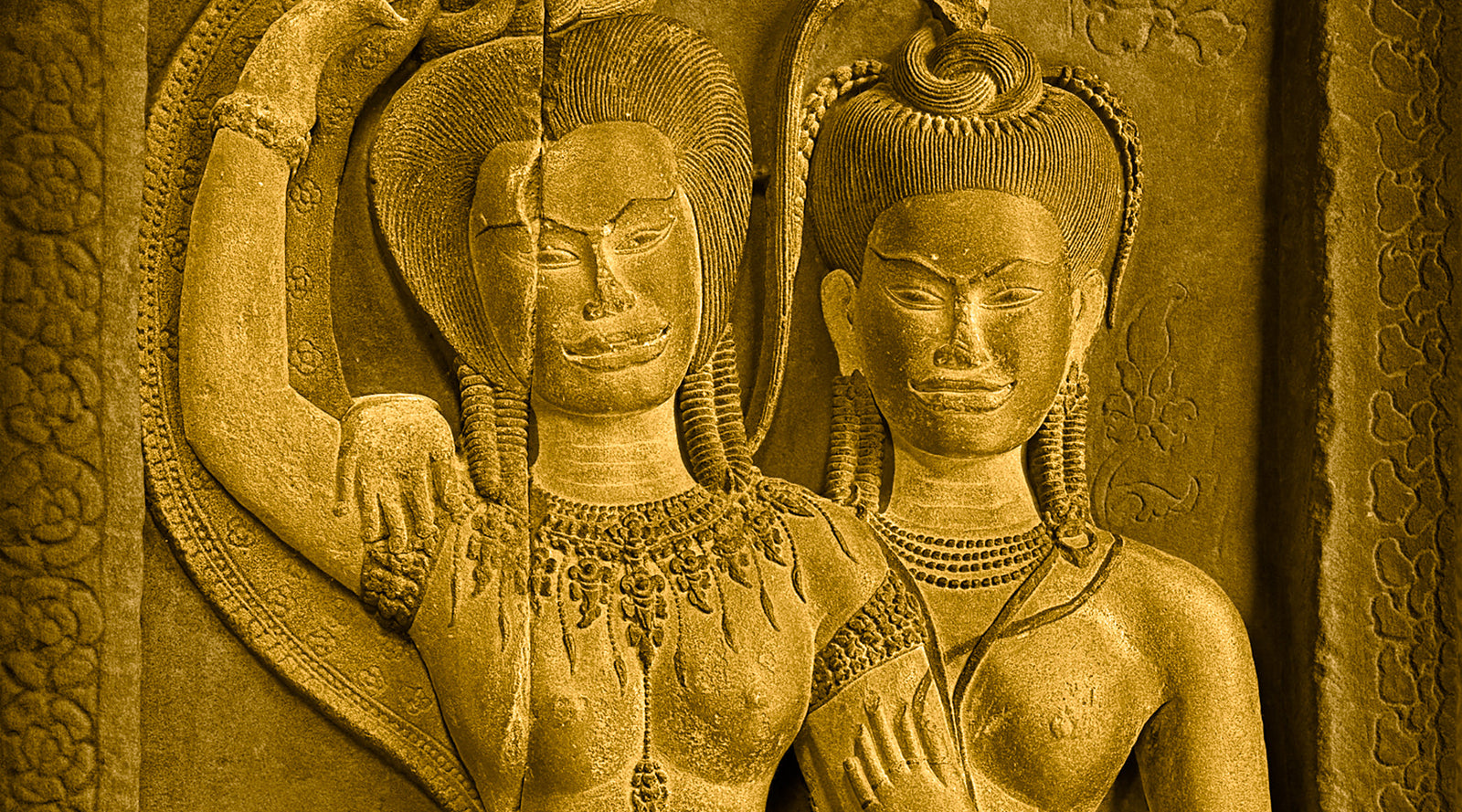
The Quiet Between Their Names
1 min read
In the galleries’ hush, two carved figures lean toward one another. One smiles—and in that smile, the gold between them glows with what the sun left behind.
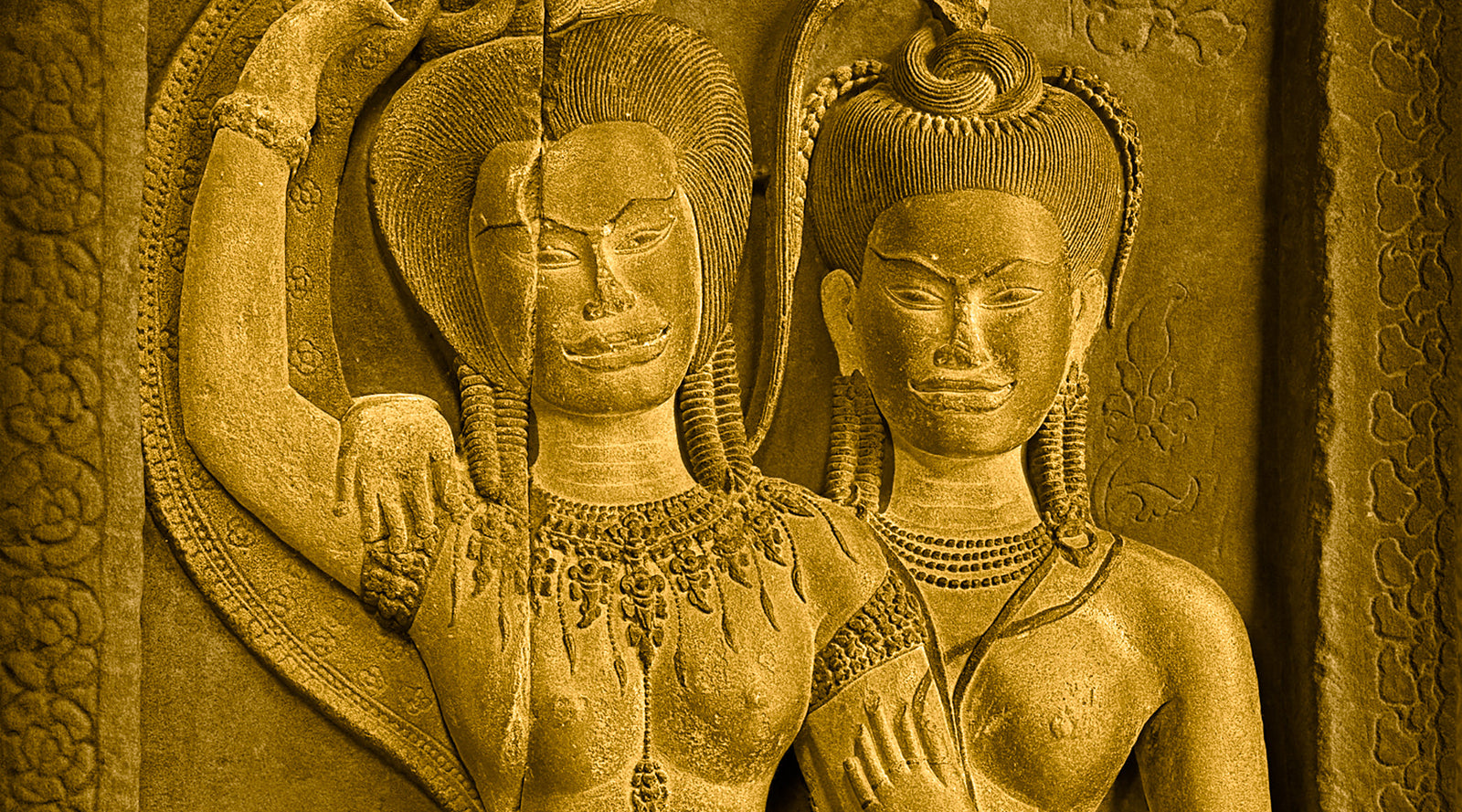
In the Gold Between Them
1 min read
Sunlight moves between them like breath. Two apsaras lean close—not for the camera, but for something older, something remembered in silence, just before the vow.
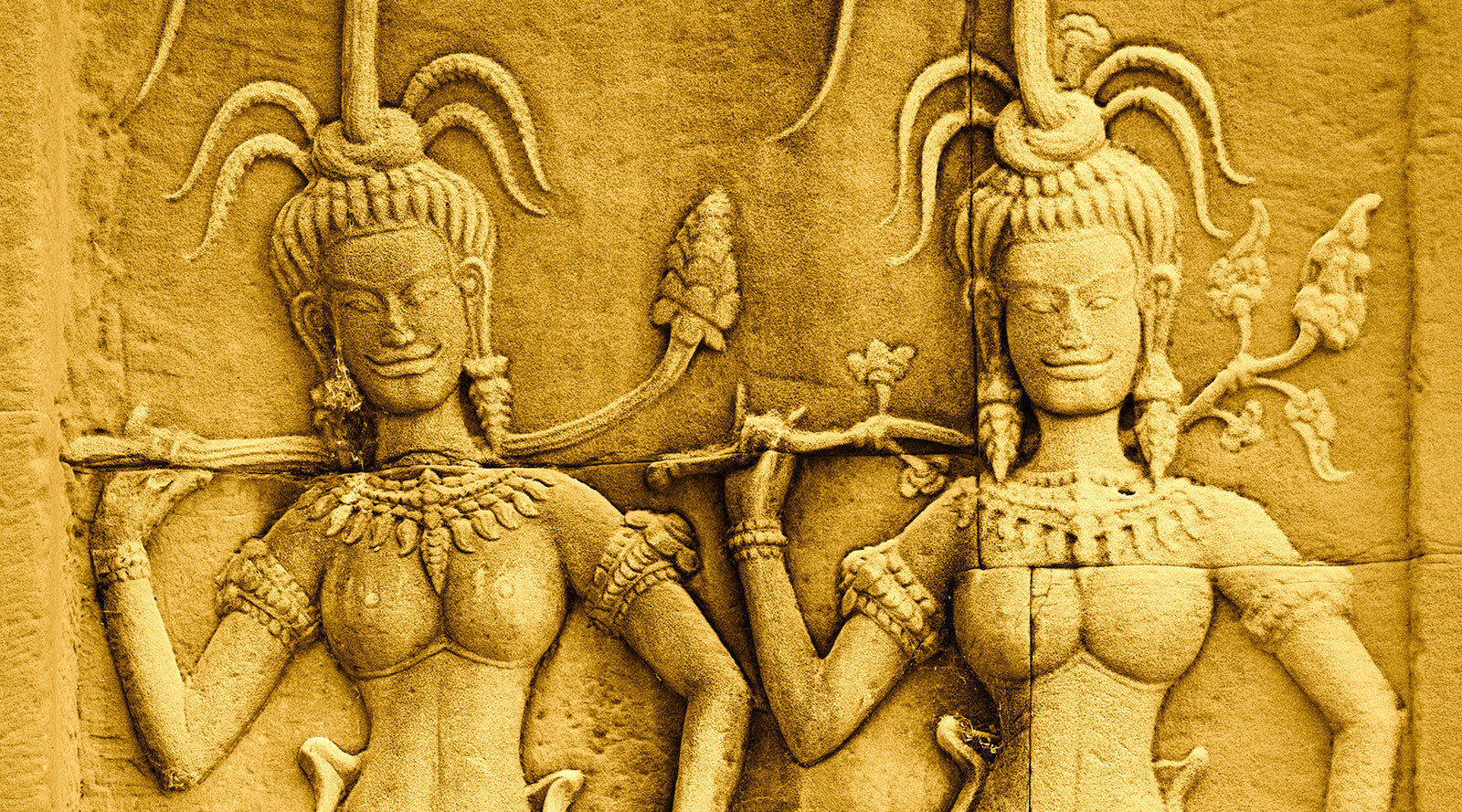
Carved in Joy
1 min read
Twin devatas stand beneath Angkor’s towers—stone-warm, nearly smiling. In their tilt and lotus curve, joy is not forgotten. It is carved. And still it waits.
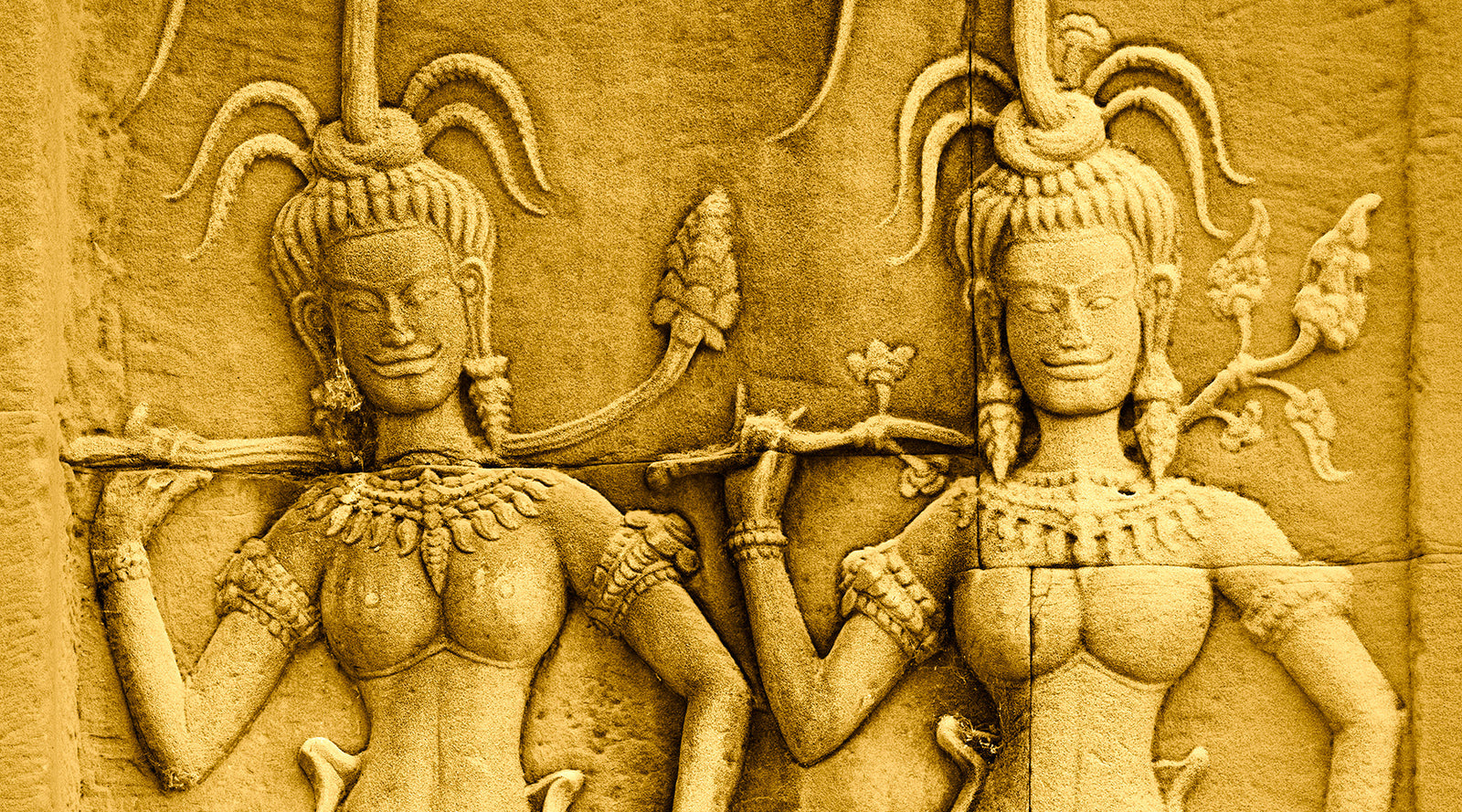
The Laughter That Endures
1 min read
On the second tier of Angkor Wat, laughter moves without sound. Two devatas meet the light not in duty, but in delight. The camera enters gently—and is received.
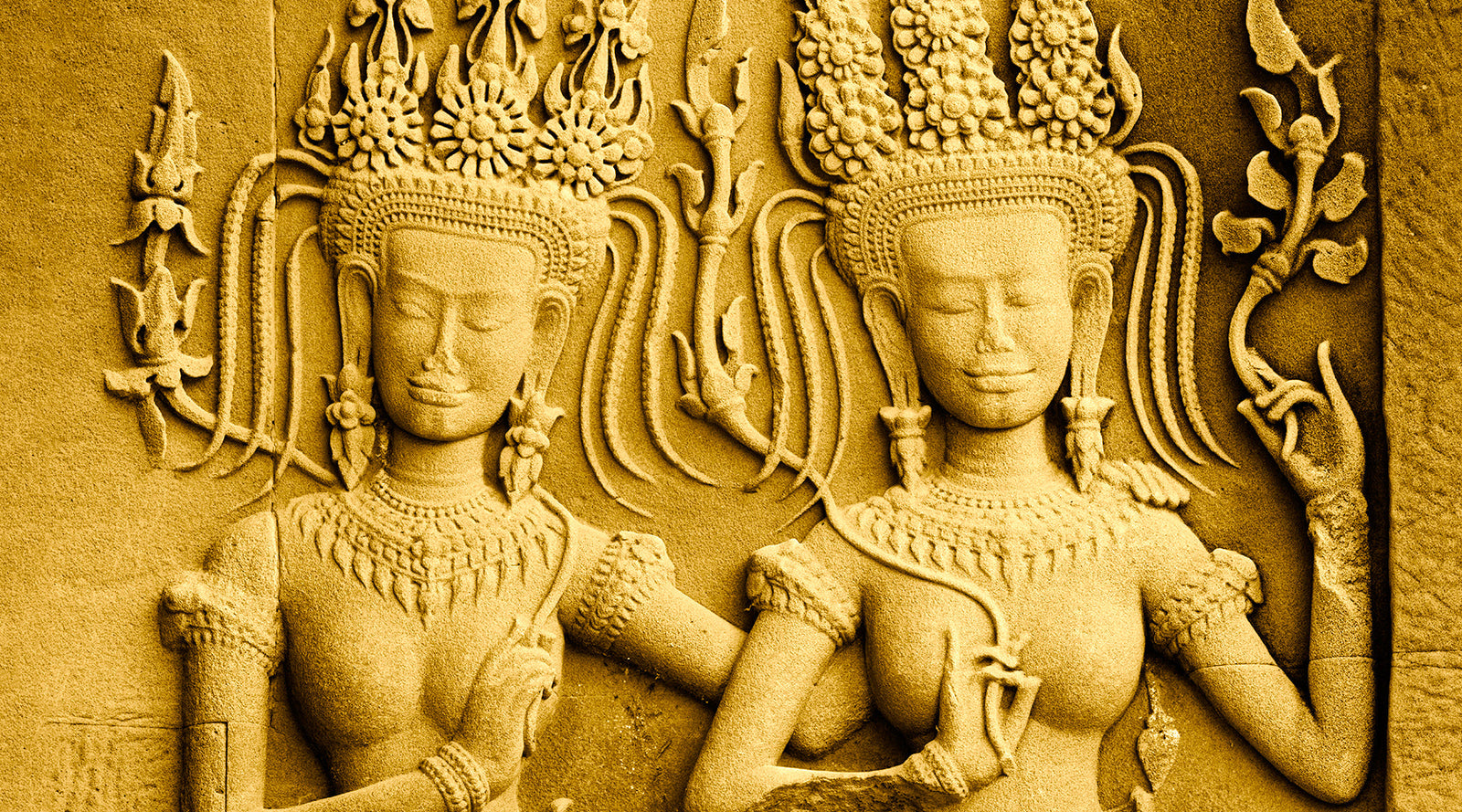
The Memory That Stood Still
1 min read
Twin devatas in quiet embrace. A hand extended, a lotus raised. Beneath Angkor’s towers, silence is not absence—it is memory made visible in stone.
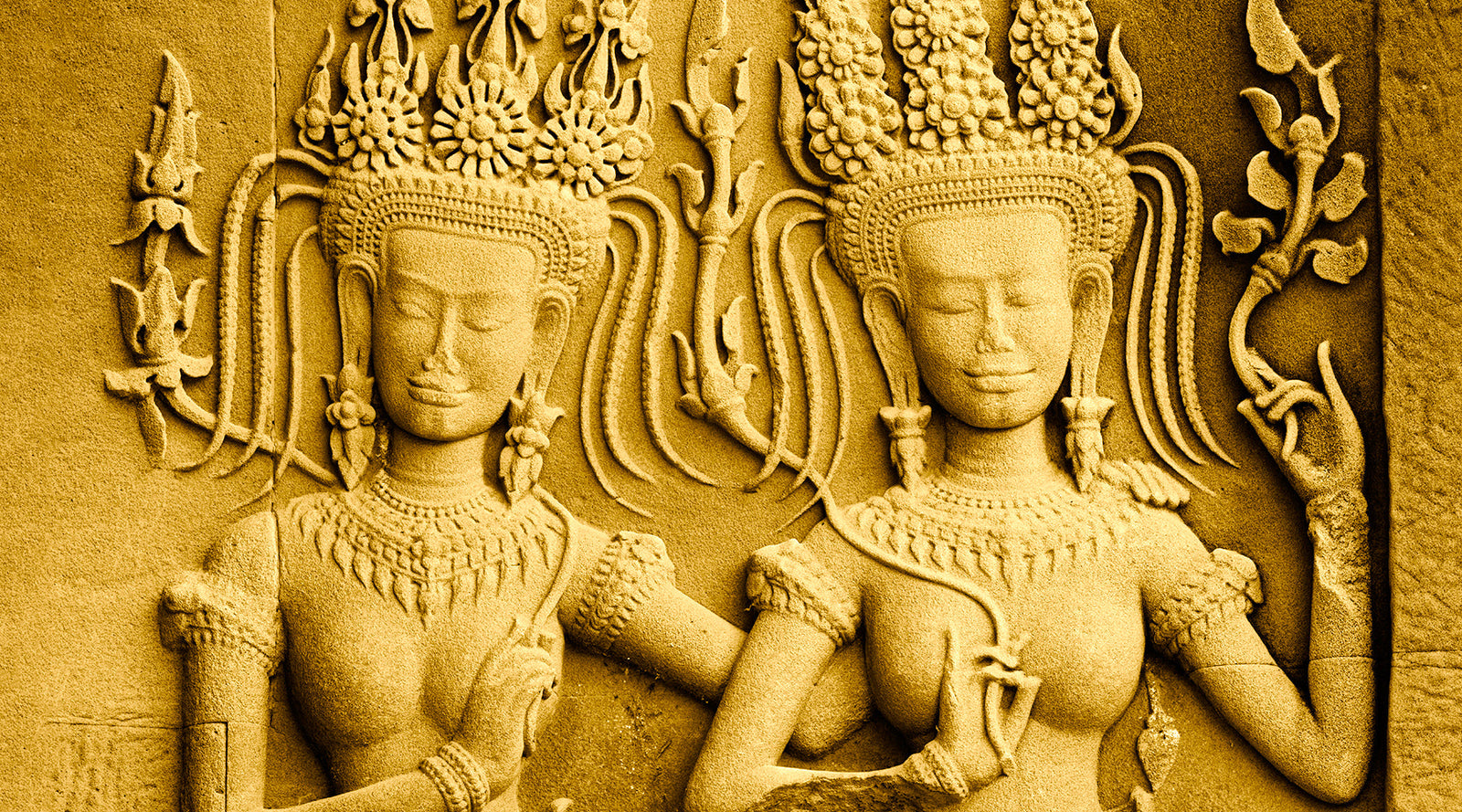
The Touch That Remains
1 min read
Two devatas lean toward each other in Angkor Wat’s upper court. One hand rests gently, endlessly. Their gesture is not moment—but memory, still unfolding.
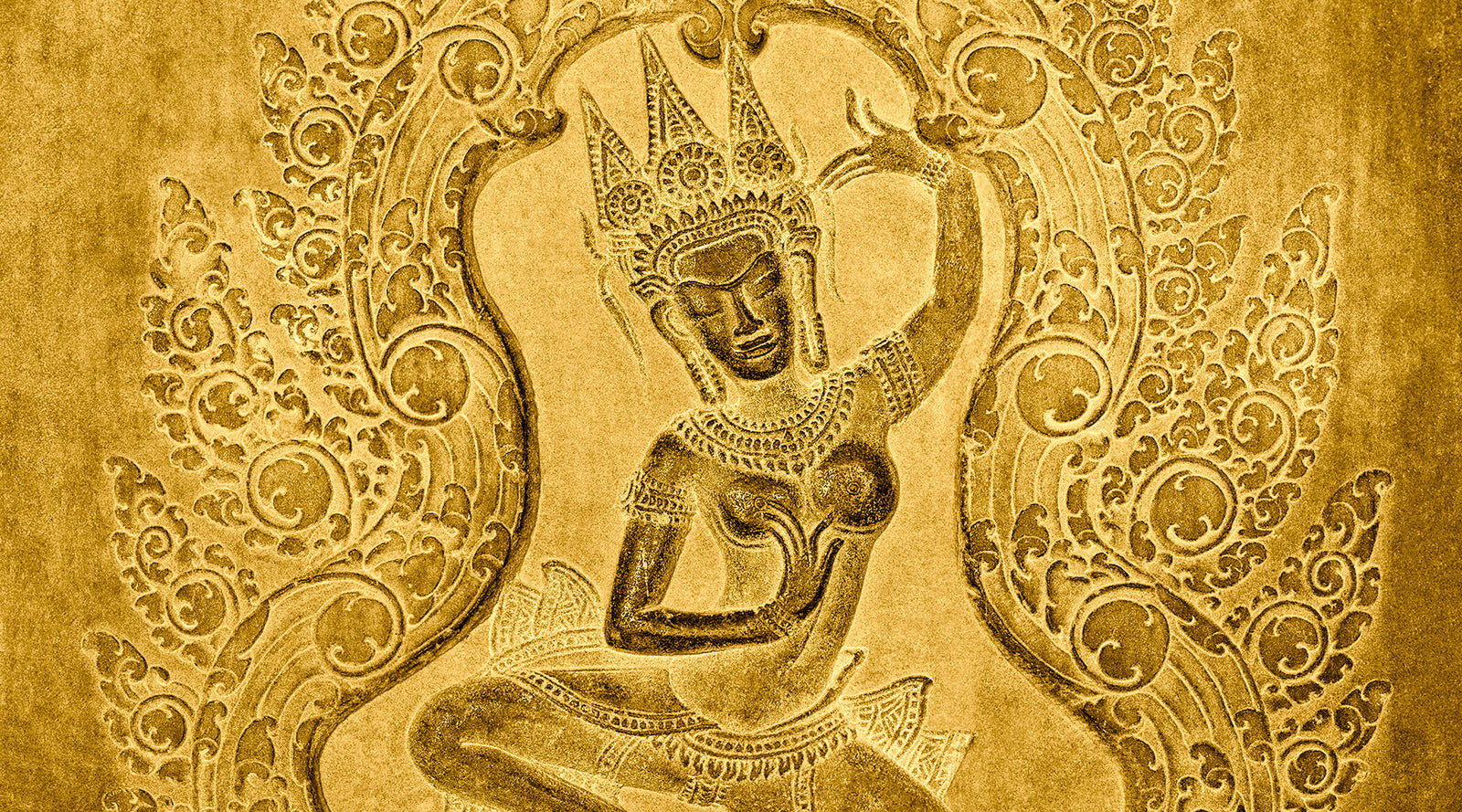
Apsara in the Last Light
1 min read
At the gate of Angkor, where sandstone breathes dusk, the carving does not invite—it remembers. The shutter waits. The gesture stays. The light returns.
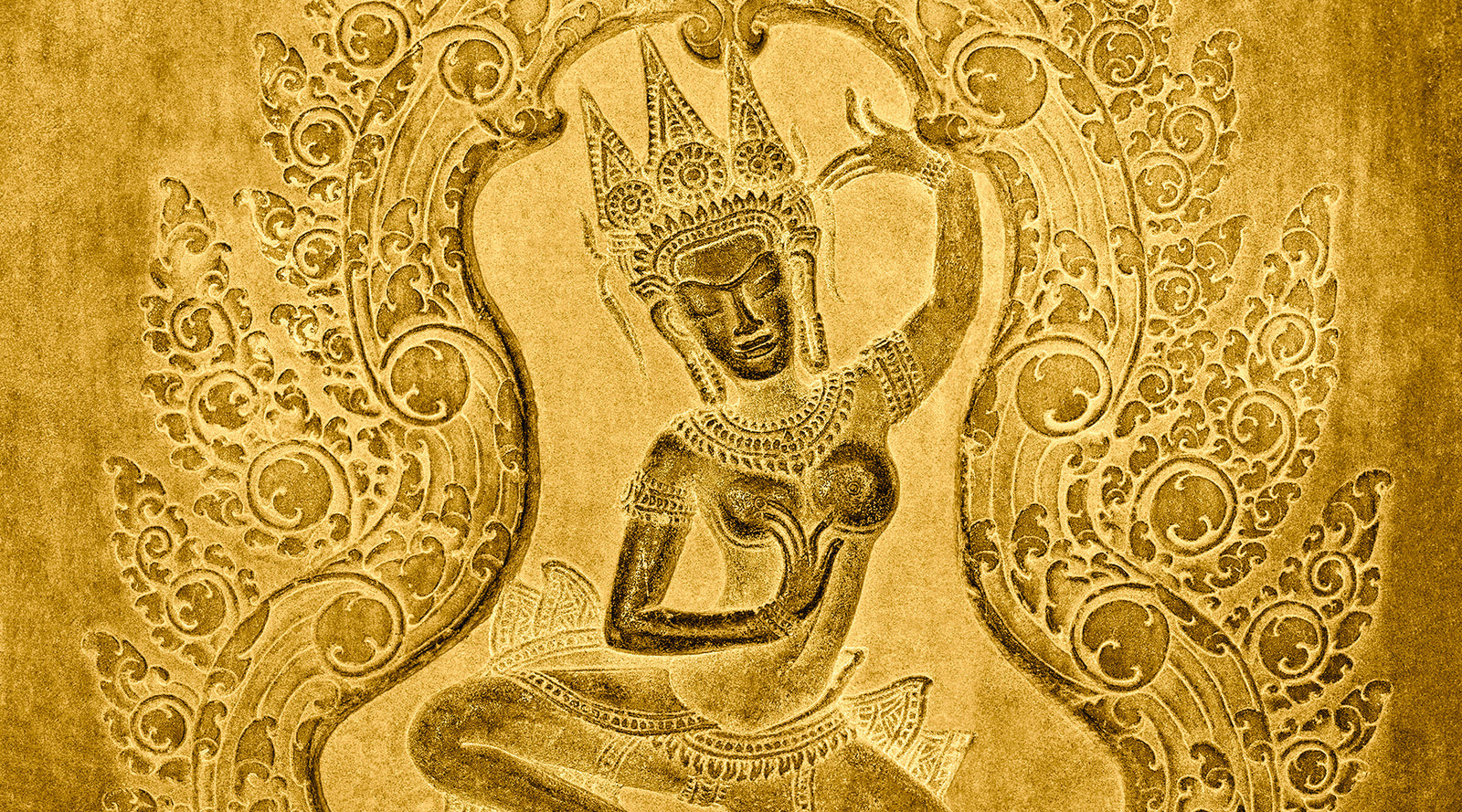
When the Gesture Returned the Light
1 min read
A final light touches the flame-shaped halo of a carved apsara. She does not shimmer—she remembers. The lens opens, not to take, but to receive.
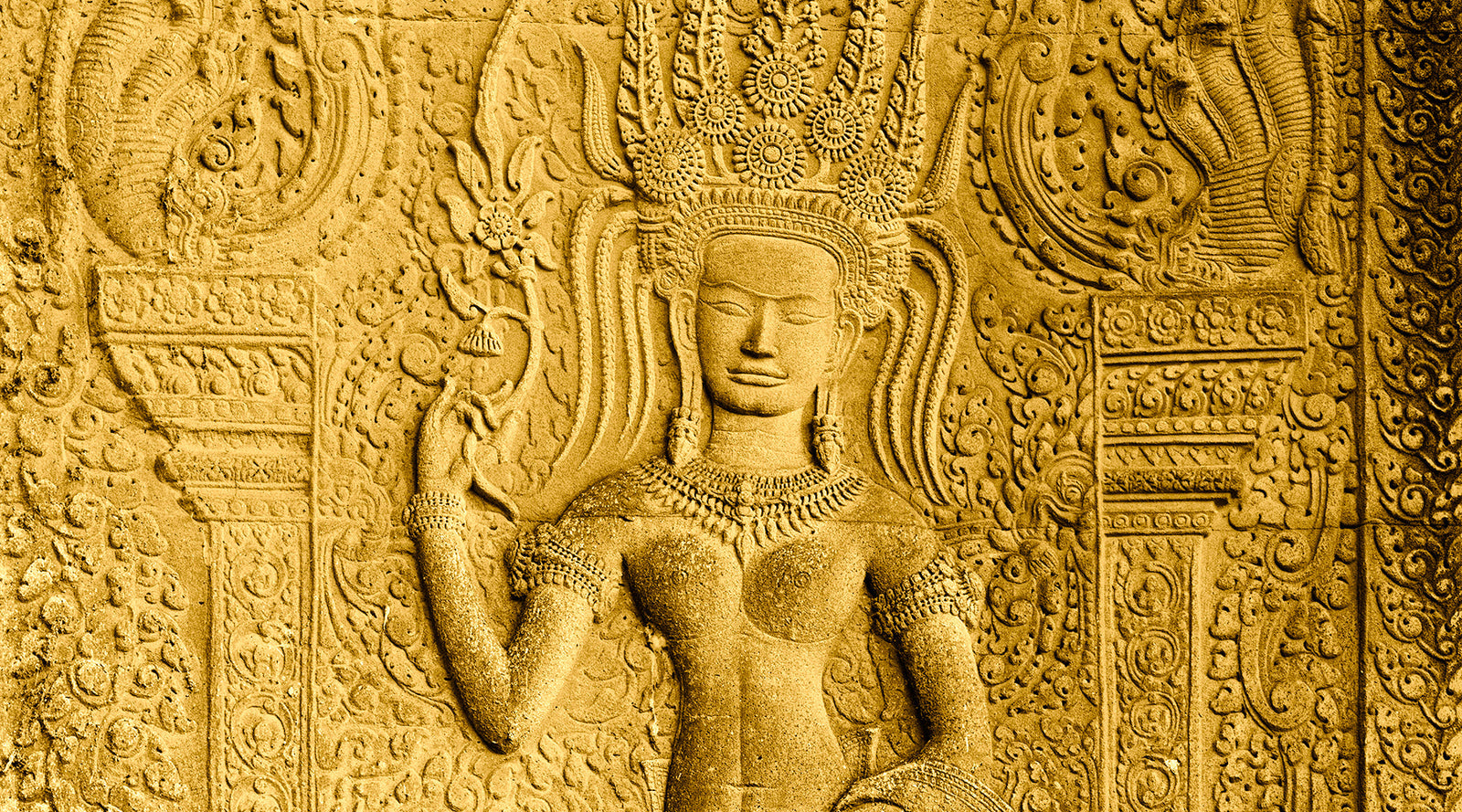
Where Time Refused to Pass
1 min read
She does not wait in shadow, but lives in the pause between light and silence. Beneath the western gate, memory becomes form, and form becomes flame.
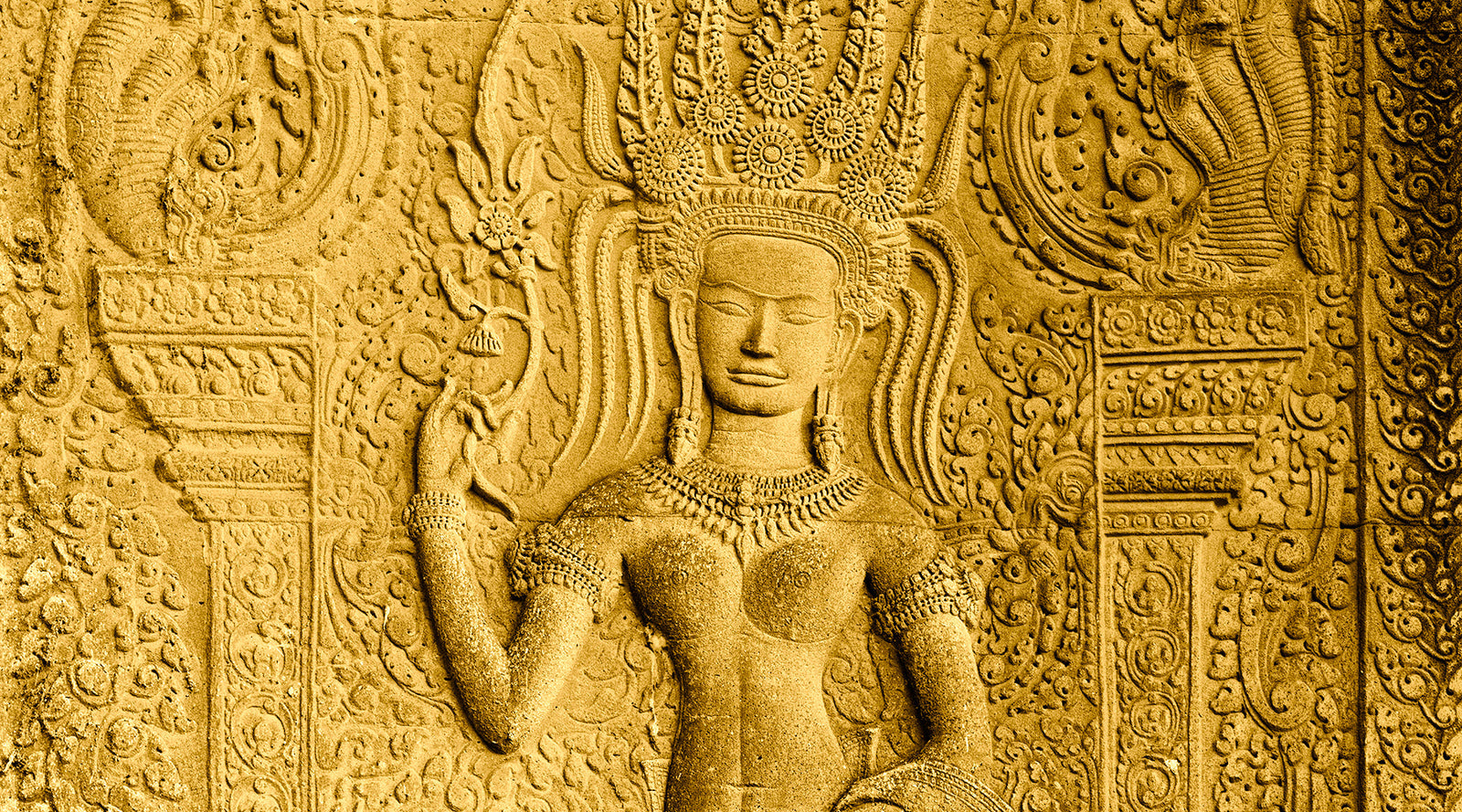
The Flame Beneath Her Gesture
1 min read
The image does not describe her. It answers her. Light lingers in silence, and the devata’s gesture becomes flame. The artist follows—not to portray, but to remain.
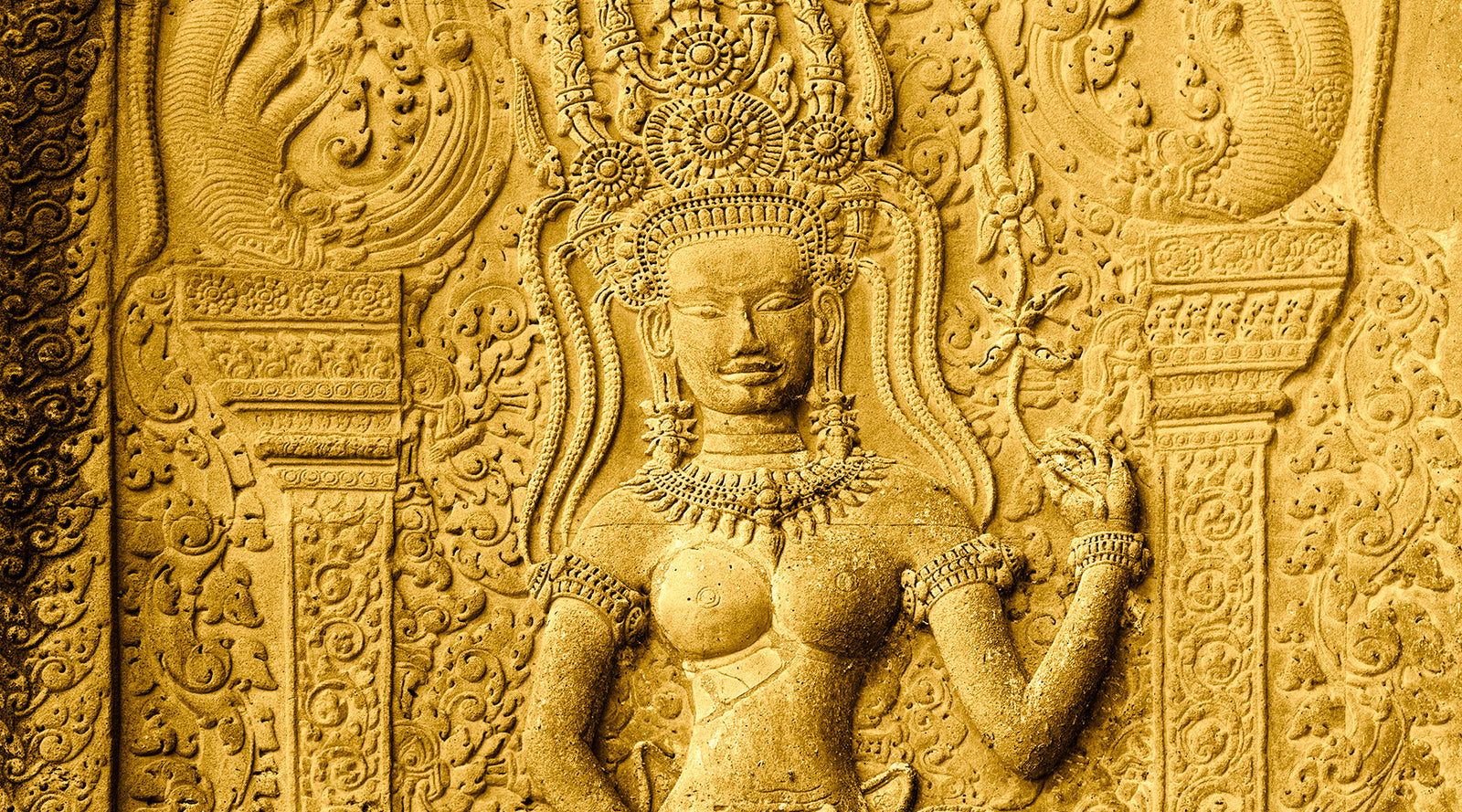
The Offering Beyond Light
1 min read
As the fire fades, her gesture holds. A devata carved in silence offers more than light—she offers the ember that never left.
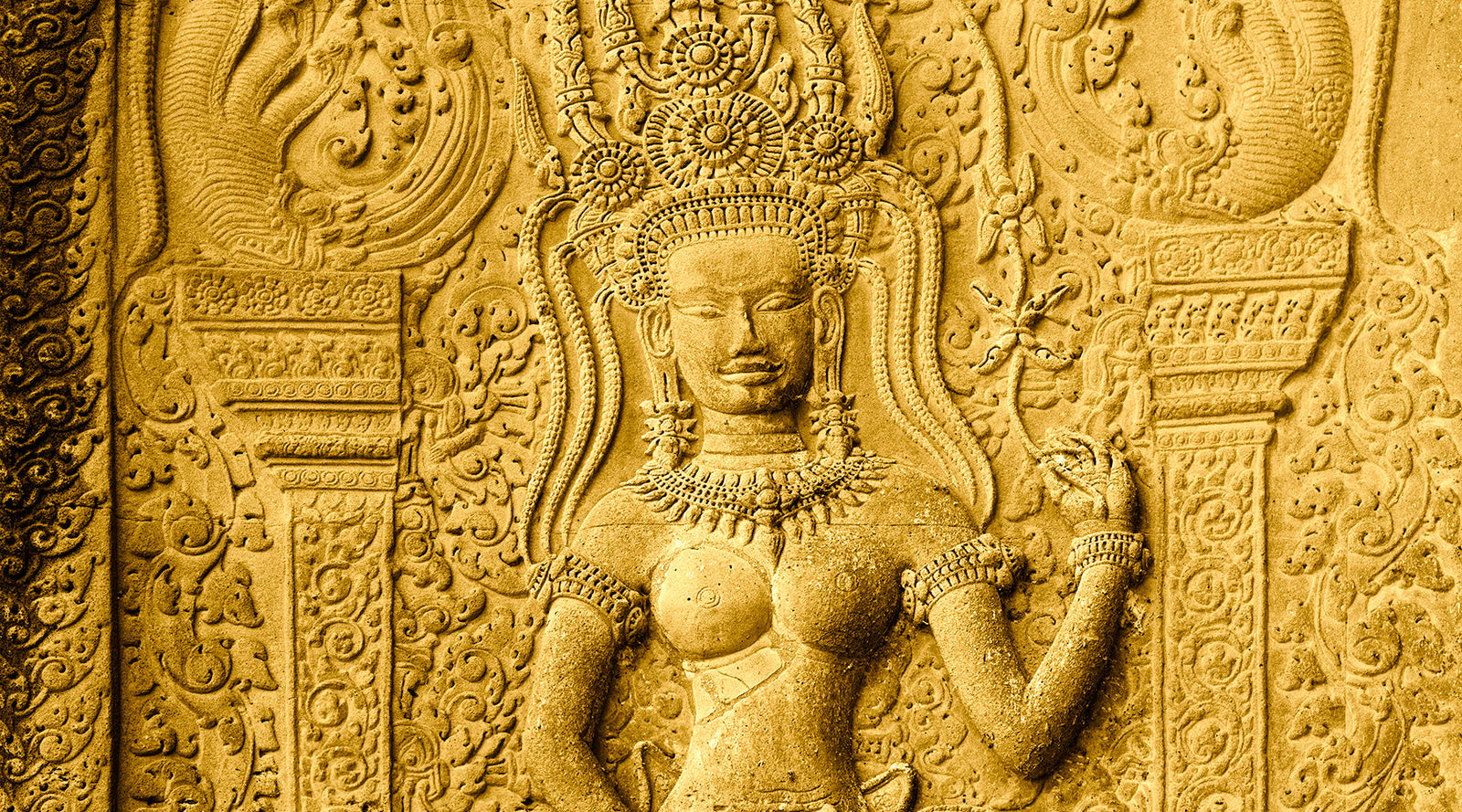
The Gesture That Endures
1 min read
A devata stands above the gate, her blossom untouched by time. Light moves through her without falling. The poem that follows is carved from that hush.
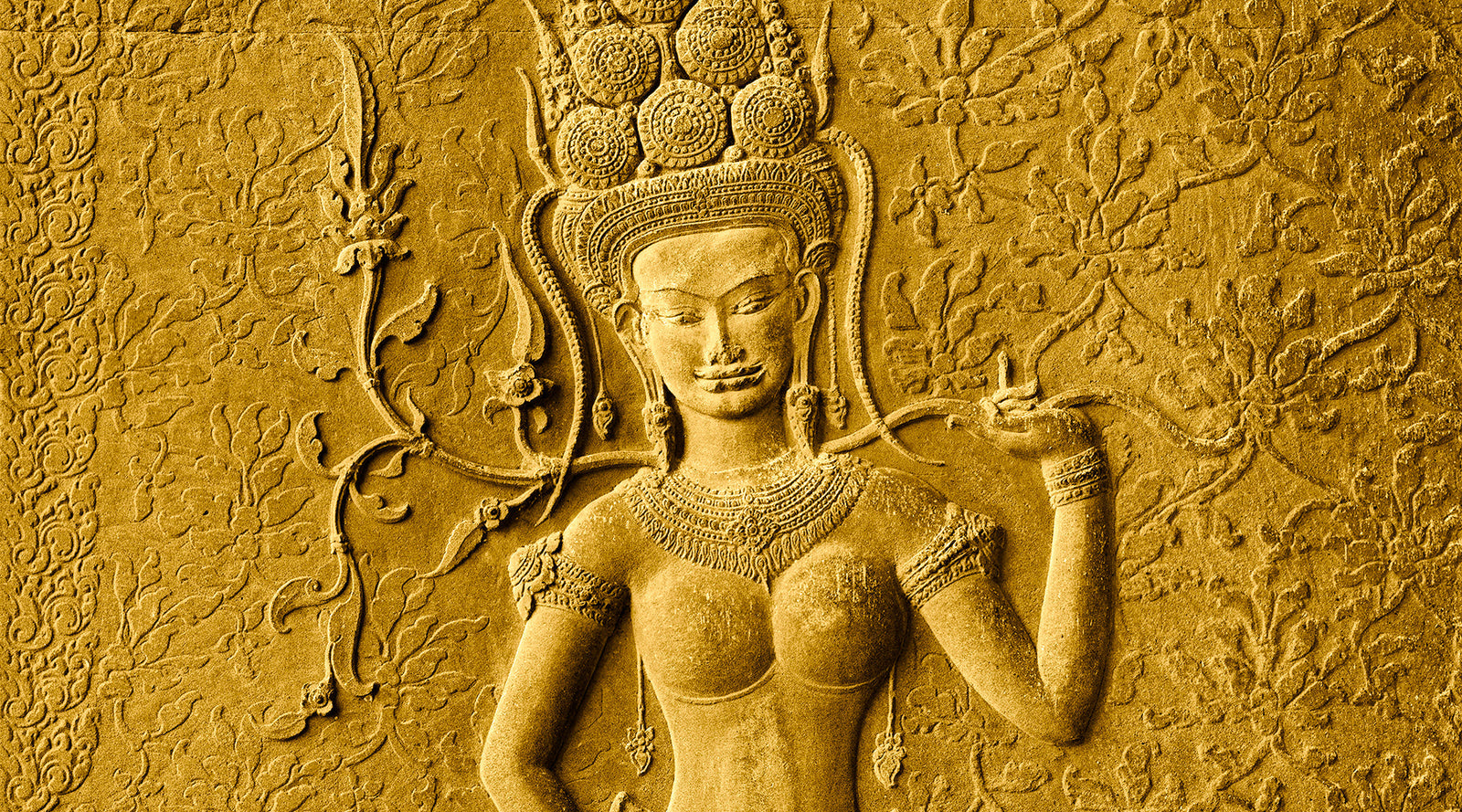
A Temple’s Final Breath of Day
1 min read
In the moment before shadow disappears, she stands without weight—lifted by memory alone. This brief meditation enters the gate as light departs, and finds the devata not carved, but breathed.
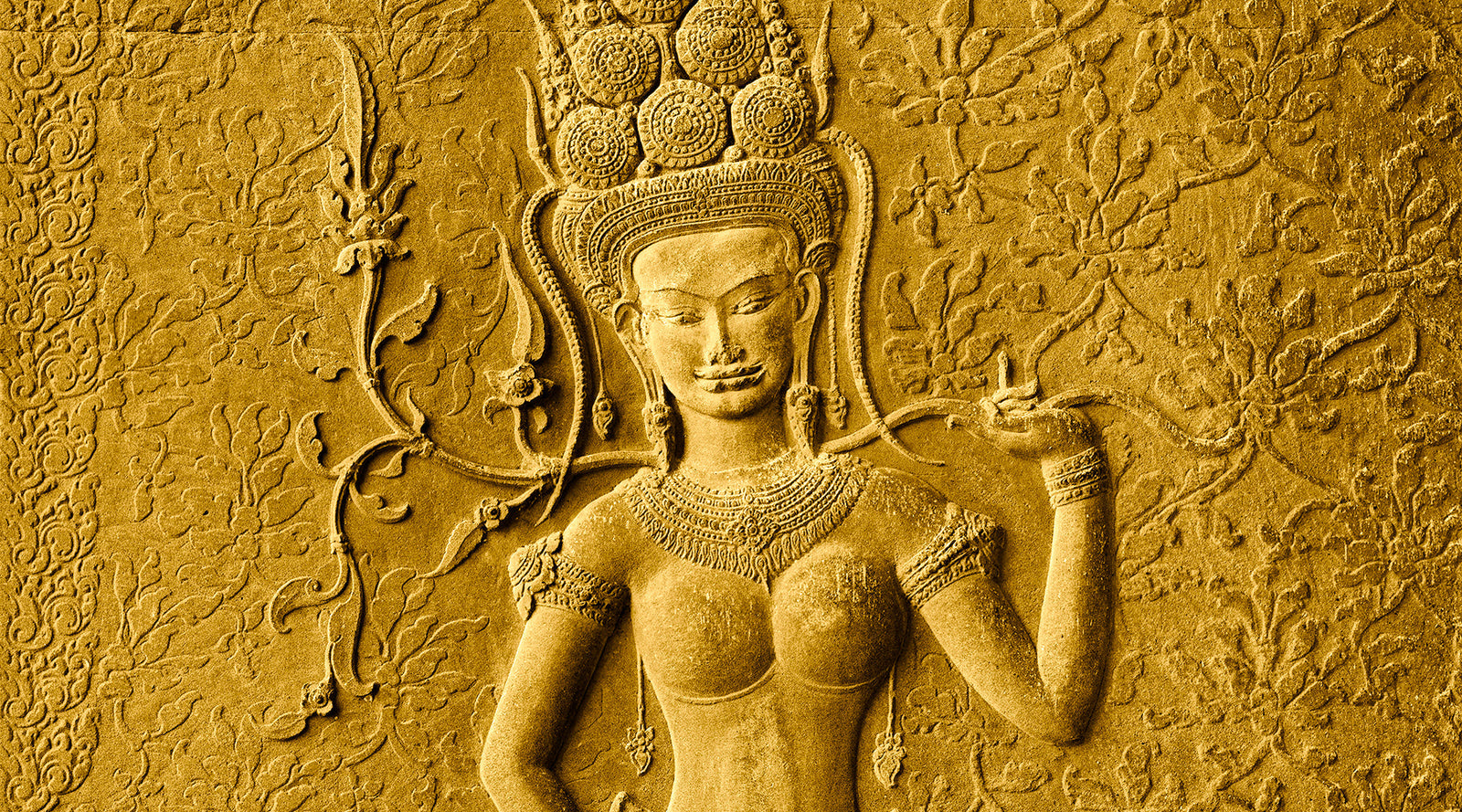
Where Flame Becomes Stillness
1 min read
The devata does not shine. She gathers. Her lifted hand receives the gold of evening without moving. In this poetic field note and verse, fire becomes memory, and the image becomes vow.
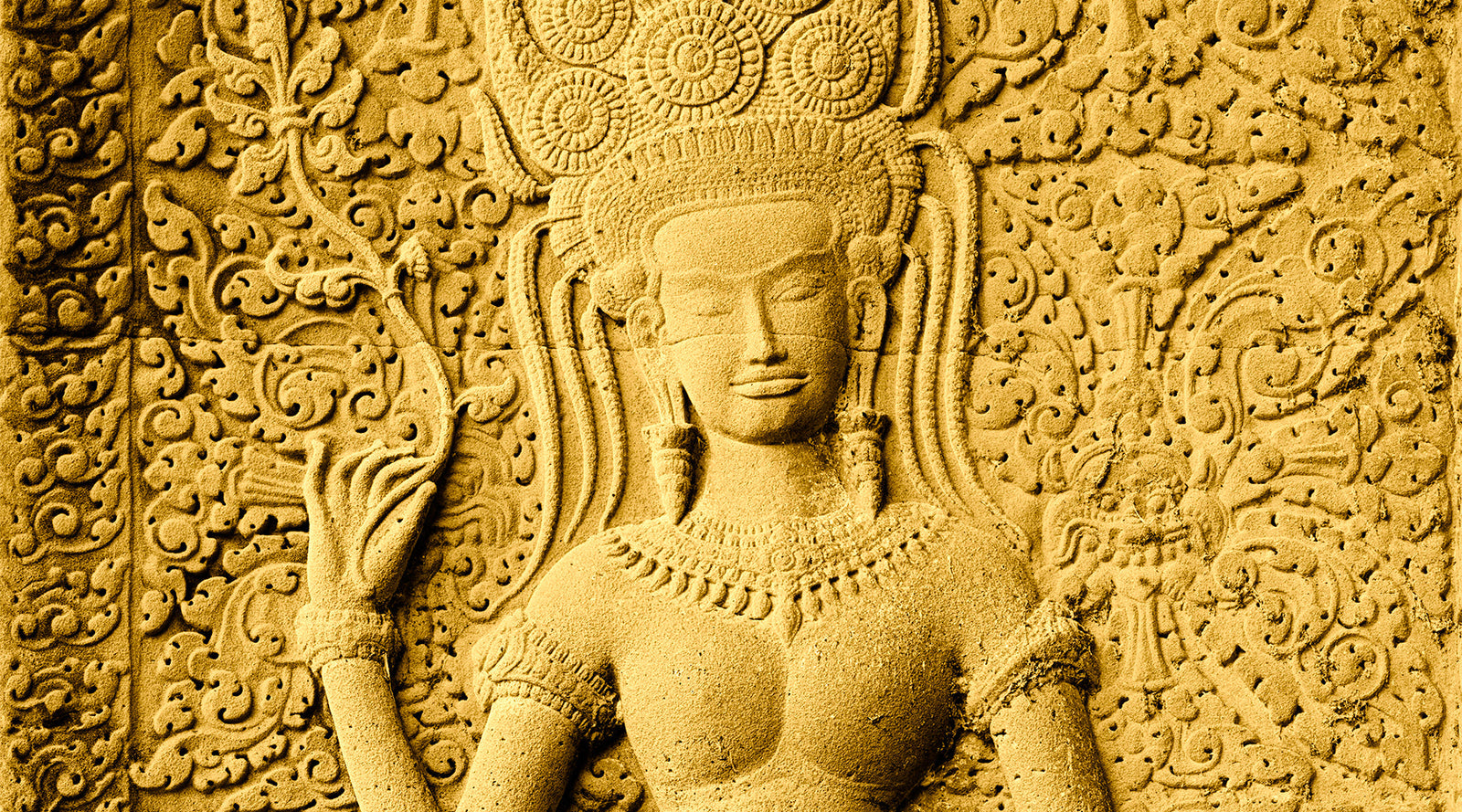
Where Gold Becomes Memory
1 min read
Some light does not fall. It remembers. This haibun captures the hush of that return—where gesture becomes vow and gold becomes memory. A breath of prose and haiku carved from the silence that remains.
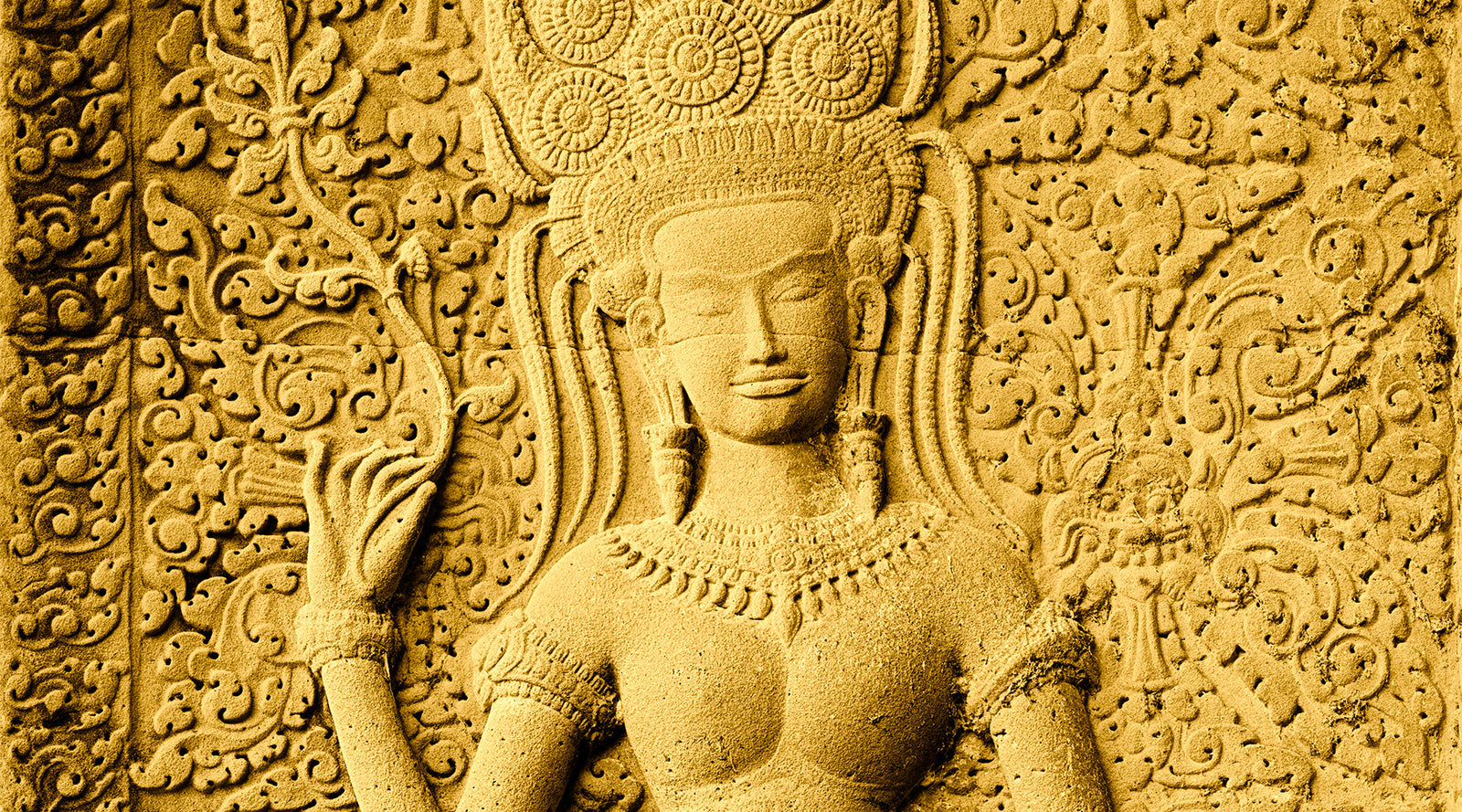
The Blossom She Holds Is Not From Earth
1 min read
Her flower was not cut—it has always bloomed in silence. This piece traces a golden hush from carved offering to sacred memory. A quiet meditation in prose and verse on presence older than stone, and gestures that endure beyond light.
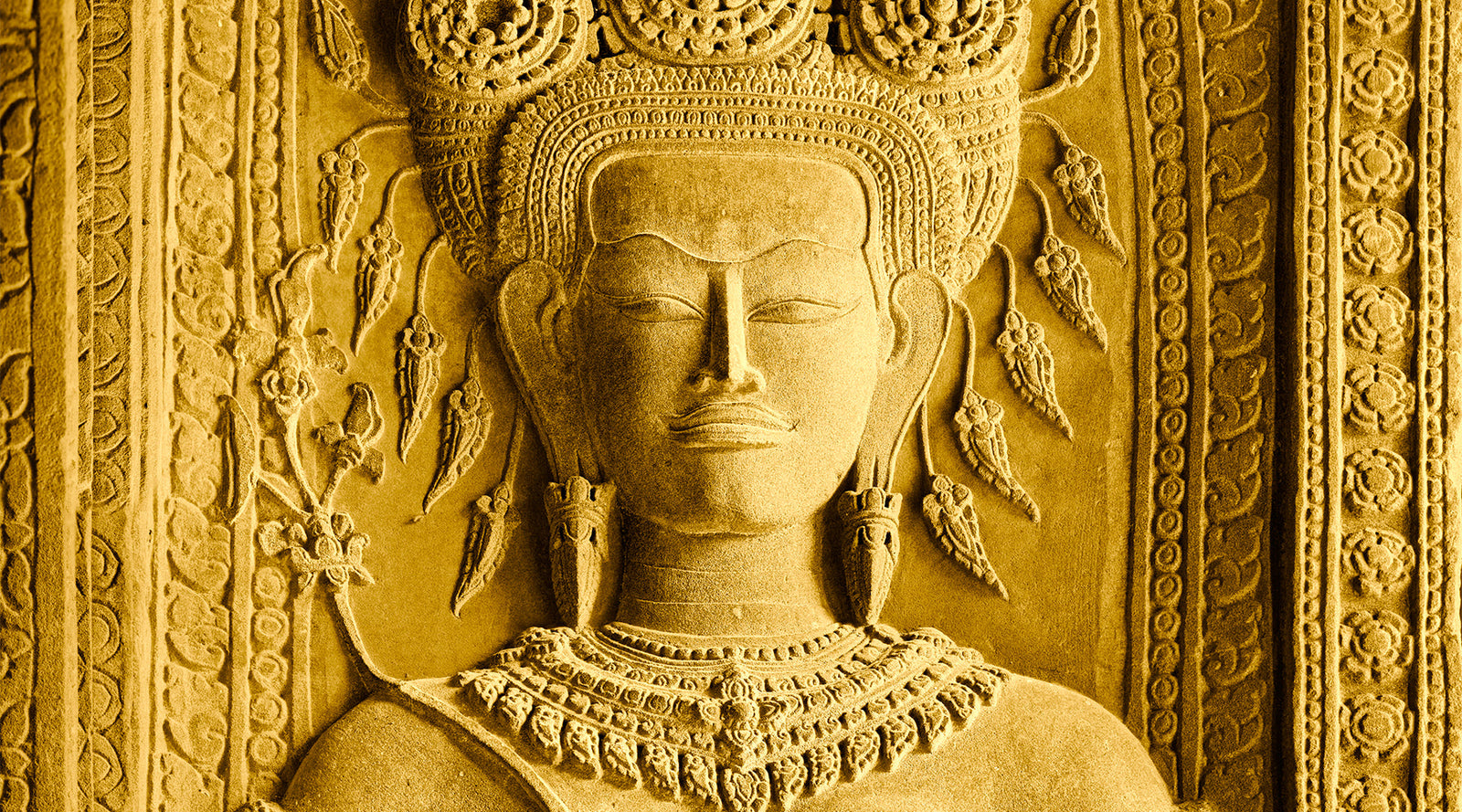
The Moment That Did Not Fade
1 min read
One last flare of gold finds the lips of a forgotten goddess. In the hush of the eastern wall, the artist receives—not a photograph, but the memory of presence.
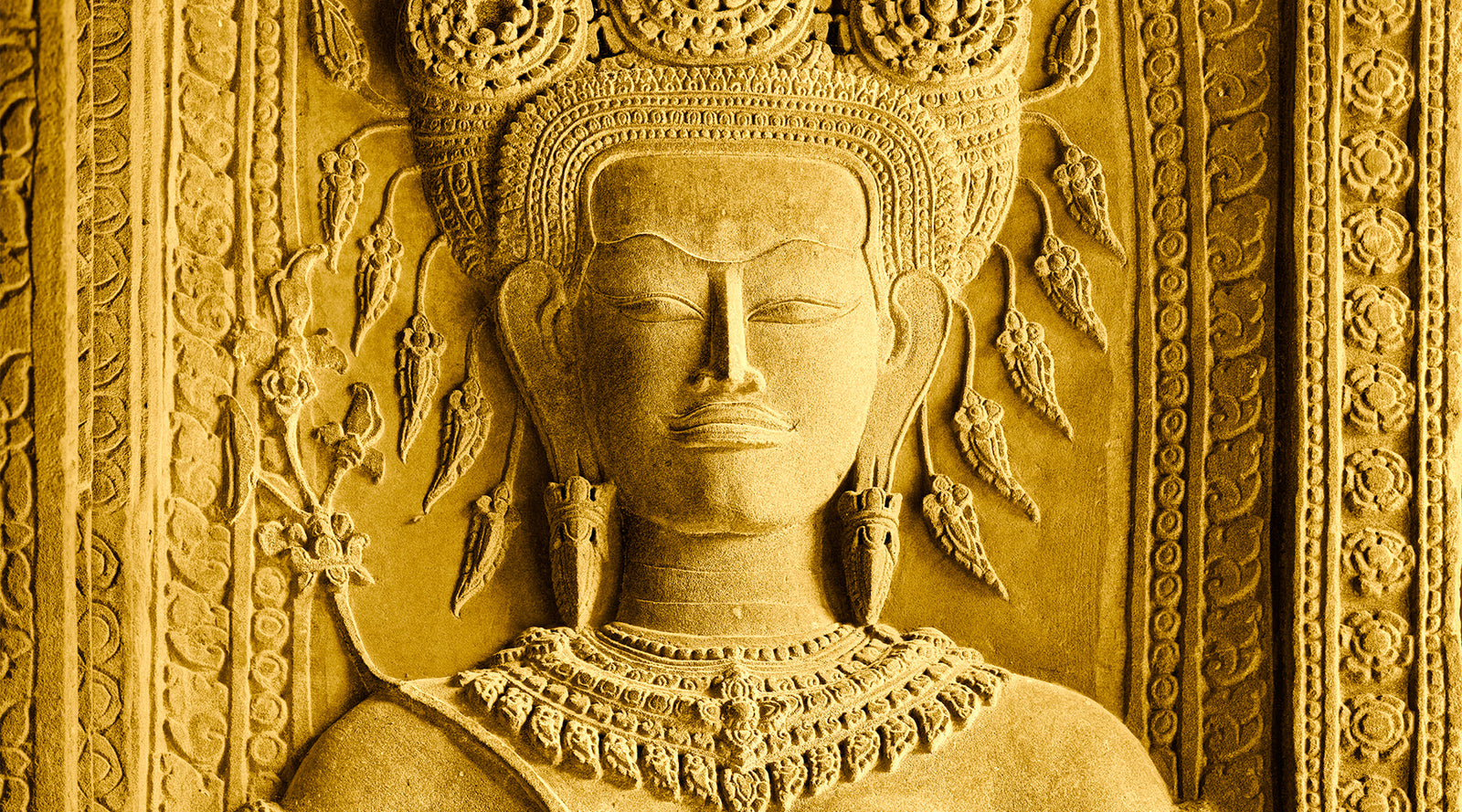
The Reflection That Knew Her Face
1 min read
As fire echoes through the stone, the artist watches a forgotten figure illuminated without touch. This poem rises from that hush—where presence meets reflection without sound.
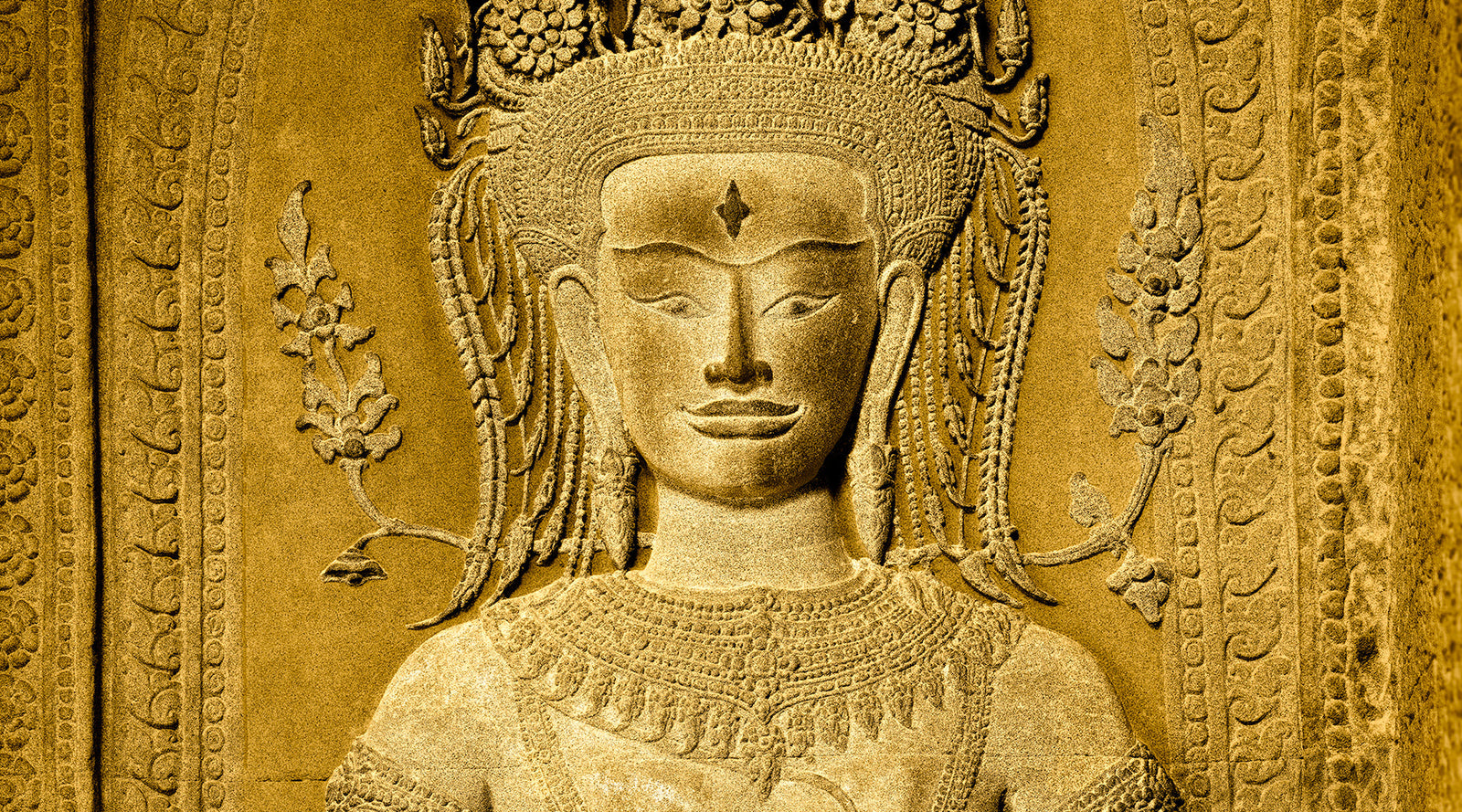
The Light That Entered Her
1 min read
Light doesn’t fall on her—it arrives and remains. This compact haibun captures a moment of quiet astonishment in Angkor’s holiest sanctuary, where presence becomes permanence.
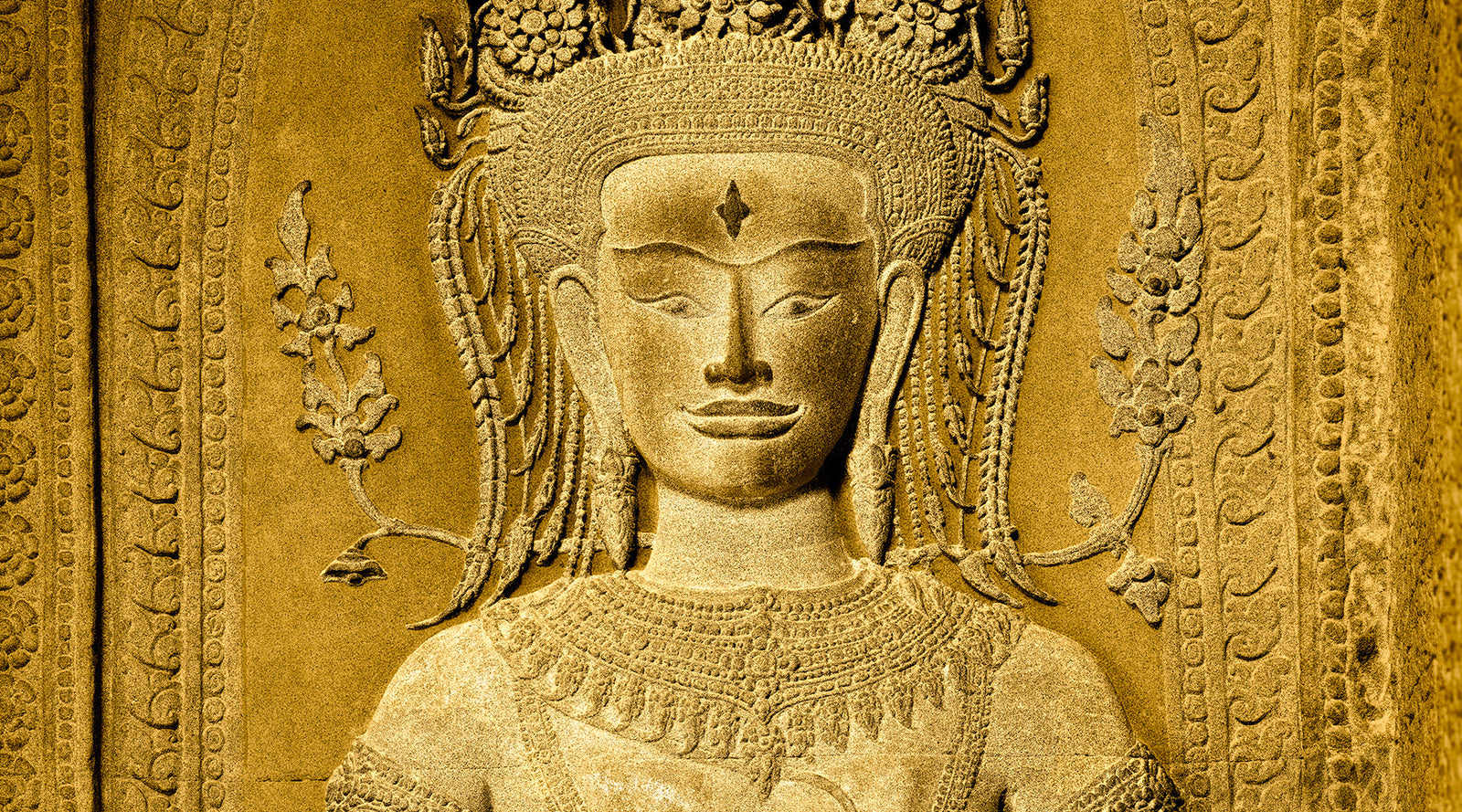
She Who Holds the Last Light
1 min read
Within the sanctuary’s hush, a goddess does not dance—she dwells. This poetic meditation enters her stillness, then opens into verse shaped by light and breath.
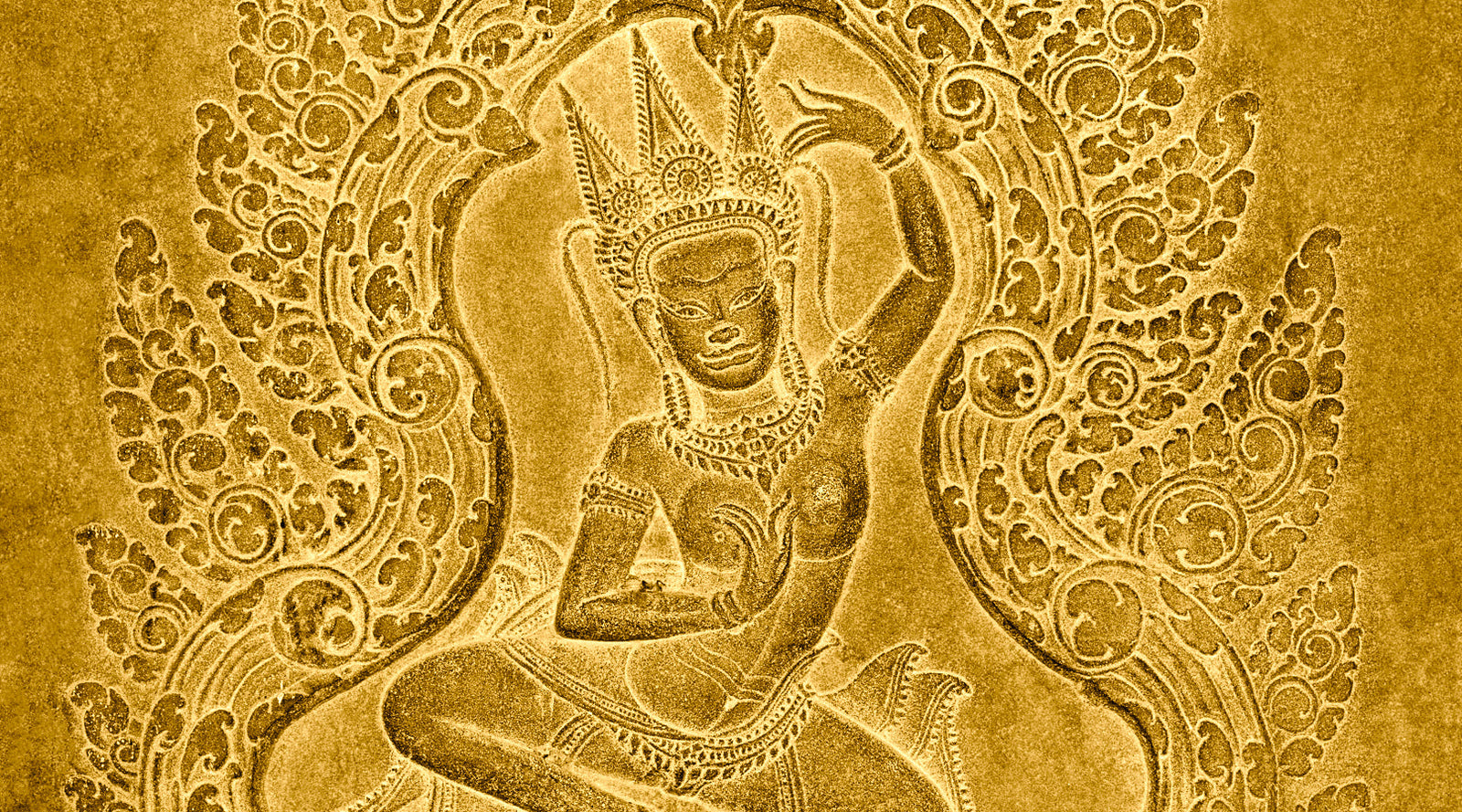
No Hand Carved Her Light
1 min read
She rose between dusk and breath—not as something made, but as something remembered. The light did not fall upon her. It entered where she stood.
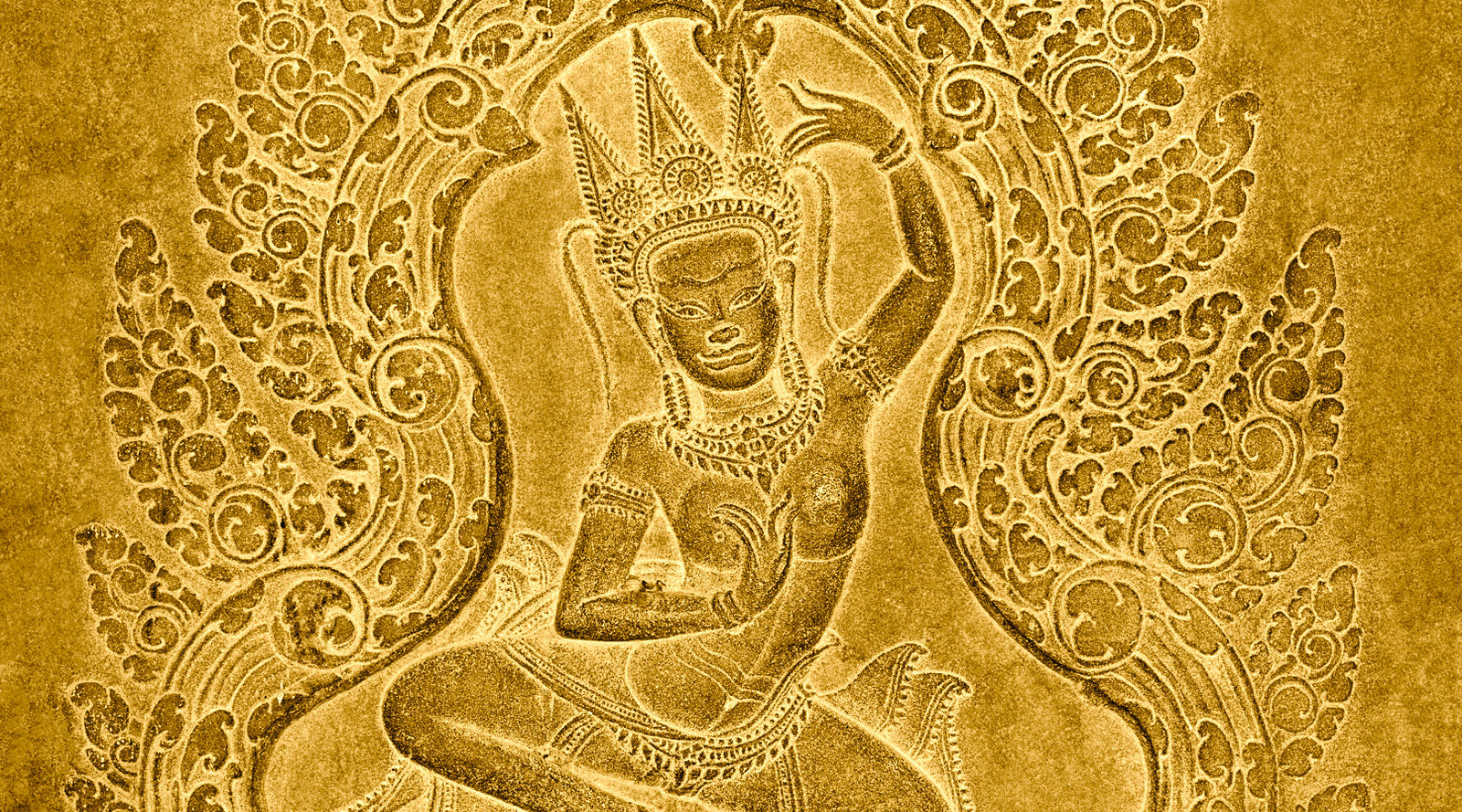
The Light That Waited to Return
1 min read
She did not move, and yet the stone remembered. The gate of flame held her, and her lifted hand carried a language older than names. Silence deepens, and breath becomes gold.

The Patience of Shadow
1 min read
She does not shimmer or declare. She waits. In this quiet haibun, stone and memory entwine as the artist meets a devata not by seeking, but by standing still.
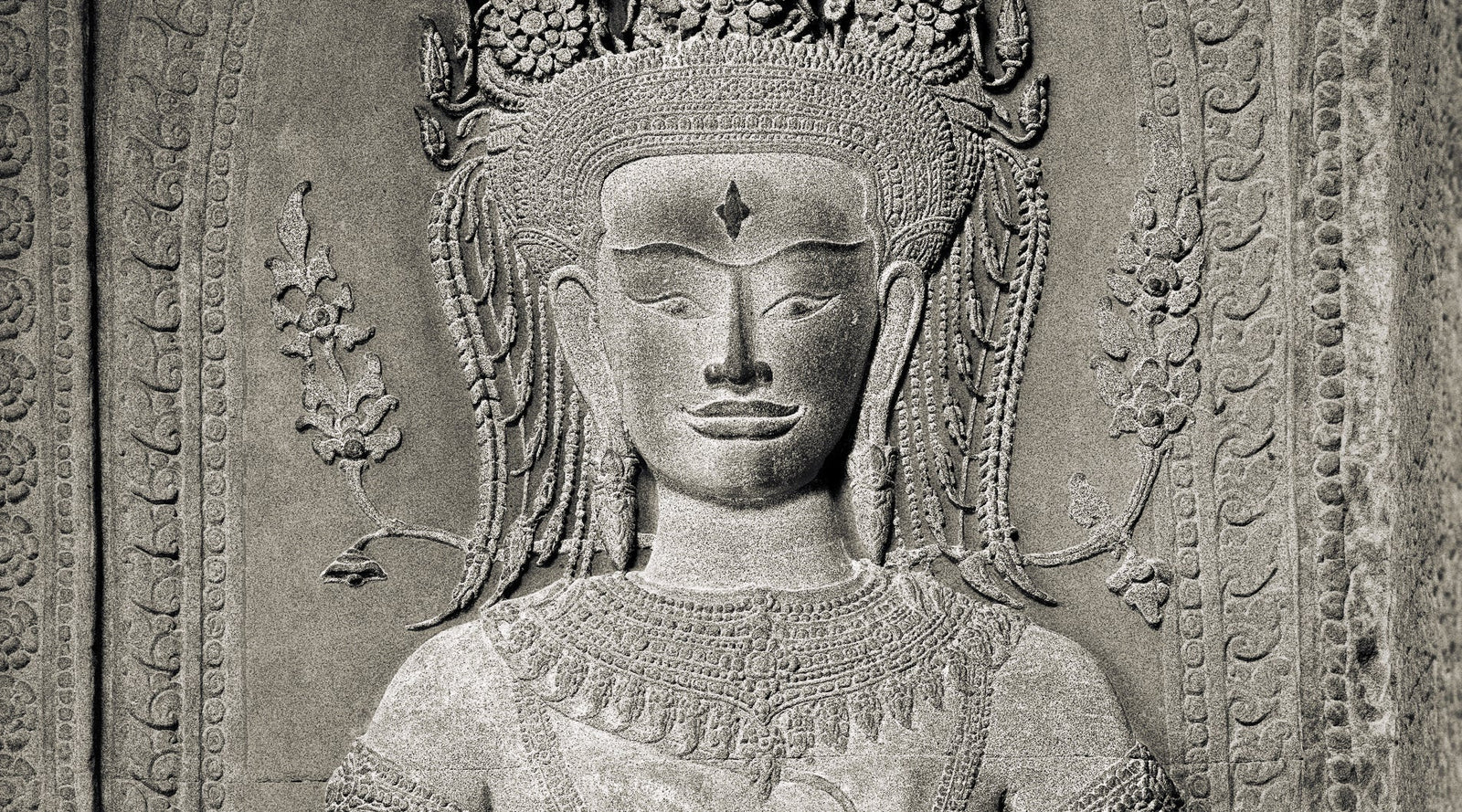
The Breath That Reveals Her
1 min read
A devata in the third tier of Angkor Wat waits for more than light—she waits for breath. In this reflection, a slow field encounter unfolds into a poem shaped by patience and presence.
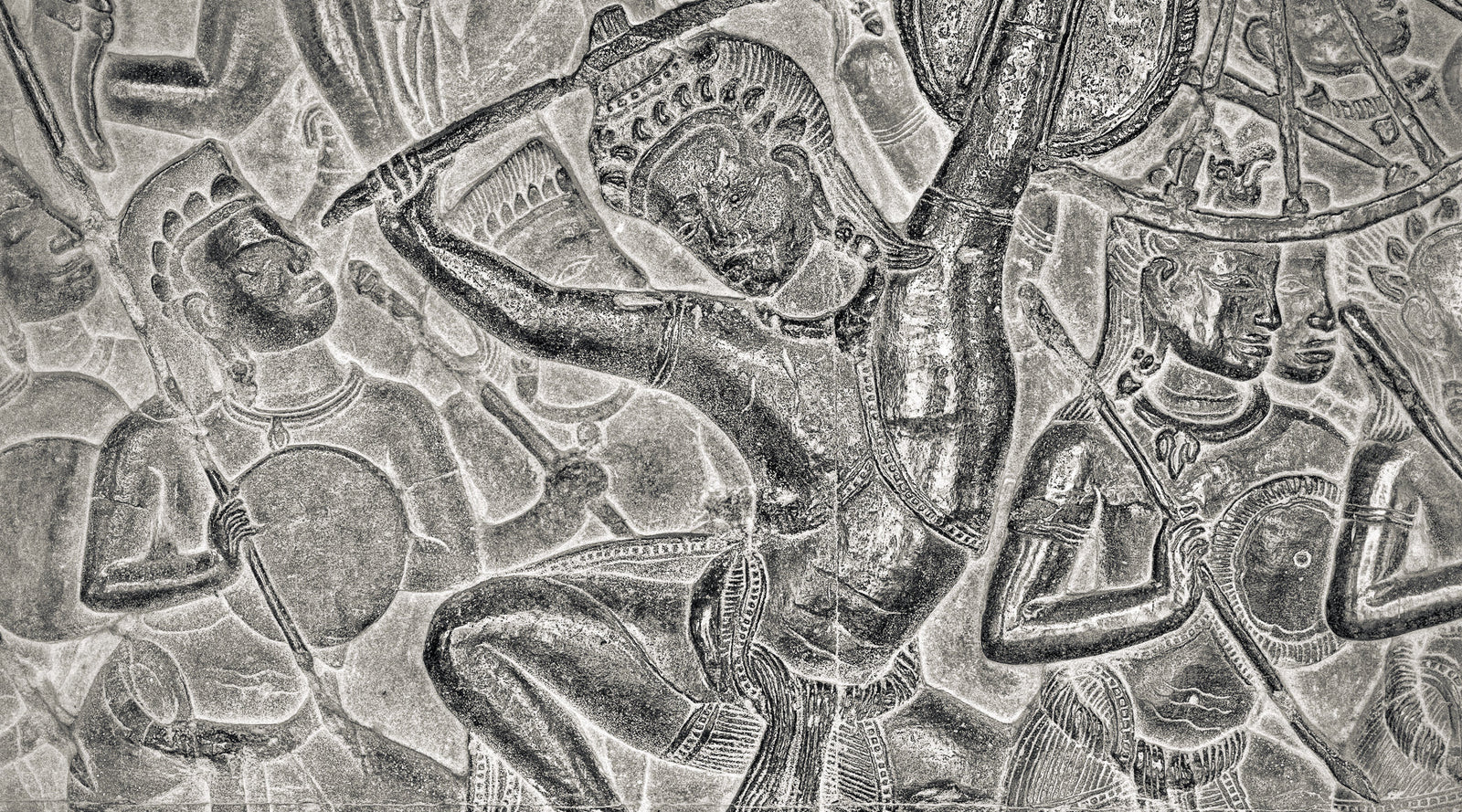
The Moment That Never Finished
1 min read
In the hush of Angkor, one figure holds a breath the world forgot. His silence still dances. His shadow still speaks.
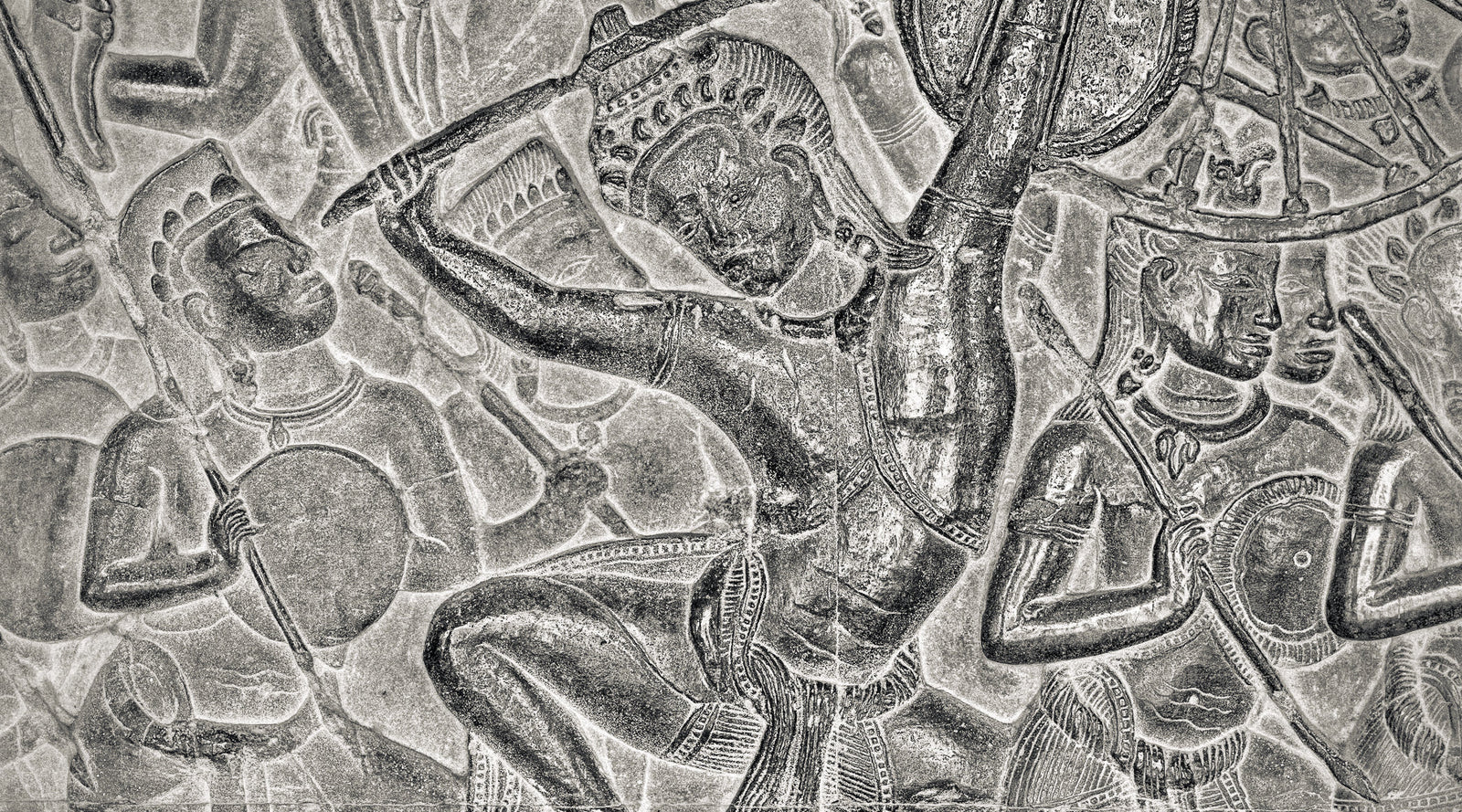
A Flame Held Upright
1 min read
He raises his hand—not to strike, but to remember. A flame caught in its last motion, inviting us to witness the quiet beauty before it fades.
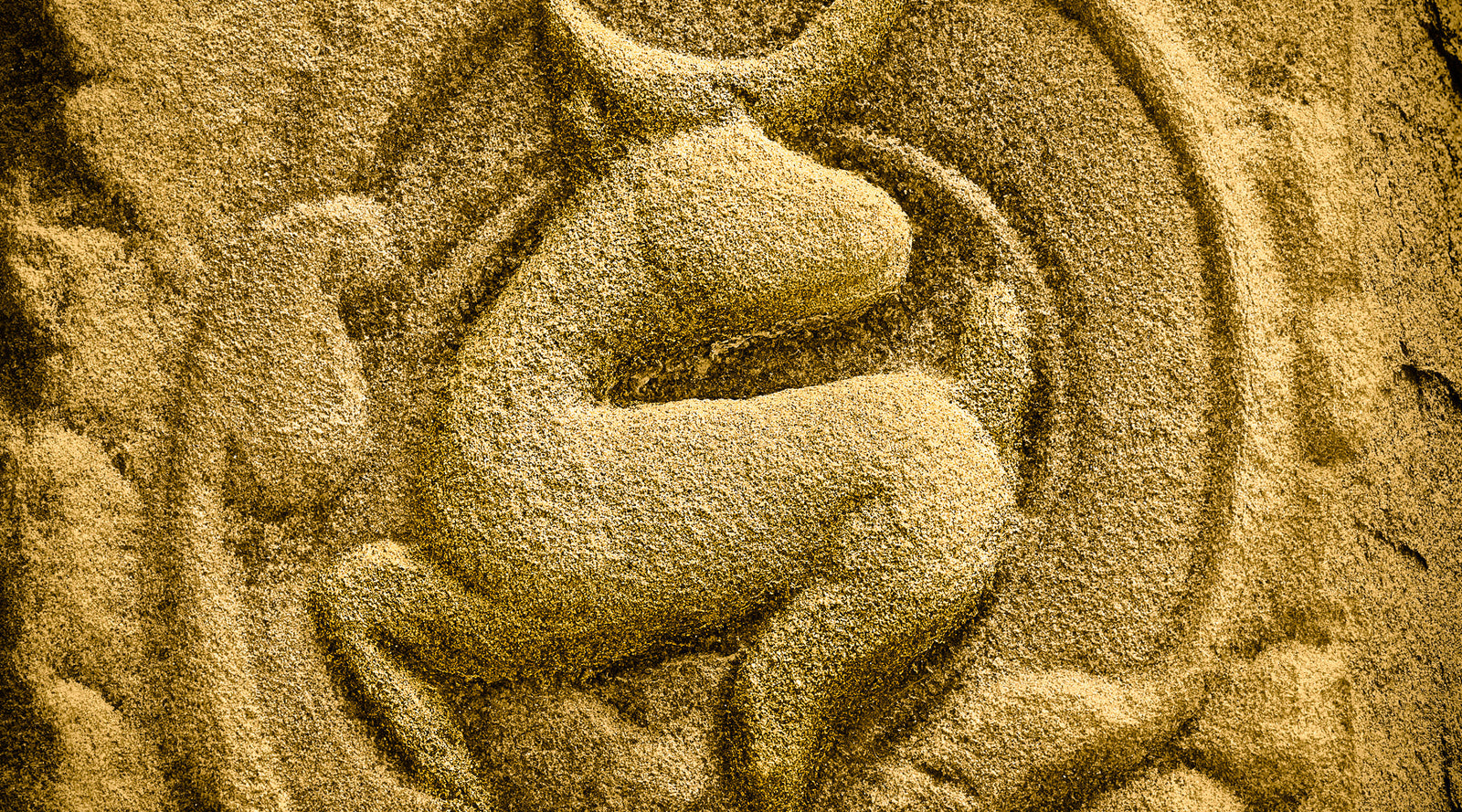
Where Motion Folds into Stone
1 min read
Stone does not move, but light listens. A quiet meditation on the gesture of a carved deer, the hush of dusk, and the moment when presence glows through stillness.
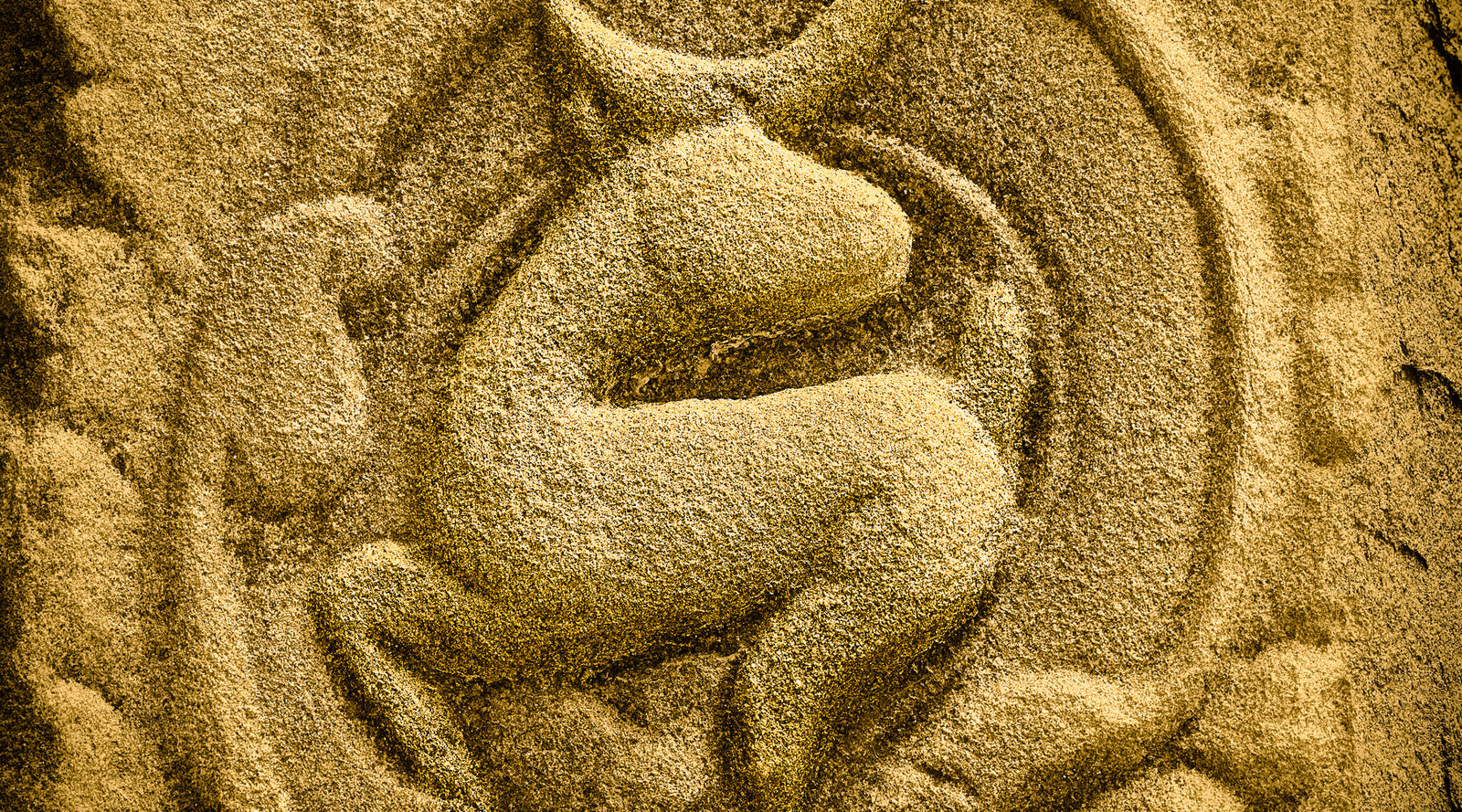
The Hoof That Called the Evening Down
1 min read
A small carving. A fading light. A hoof raised in silence. In this lyrical meditation, a field note deepens into poem, revealing how dusk gathered inside a gesture—and did not leave.

The Shelter That Remains
1 min read
Time gathers around the Buddha as breath, not burden. In this haibun, the artist offers a moment that does not explain itself—it simply remains, unmoving beneath the shelter of silence.
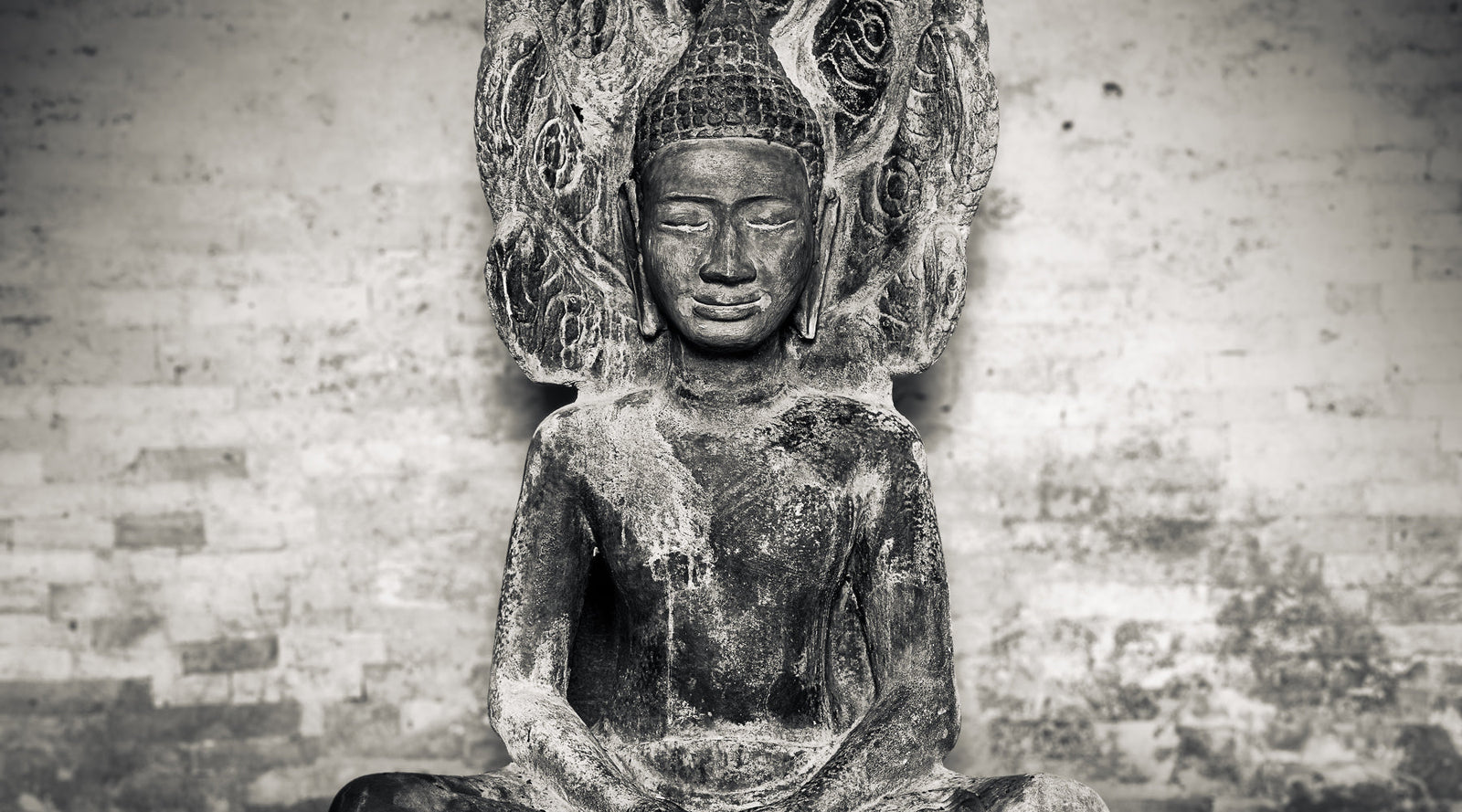
What Light Remembers
1 min read
Light rests on the Buddha’s chest without revealing him. In this moment of reverent waiting, the image forms as presence—not picture. The serpent shelters, the stone remembers, and the poem listens.
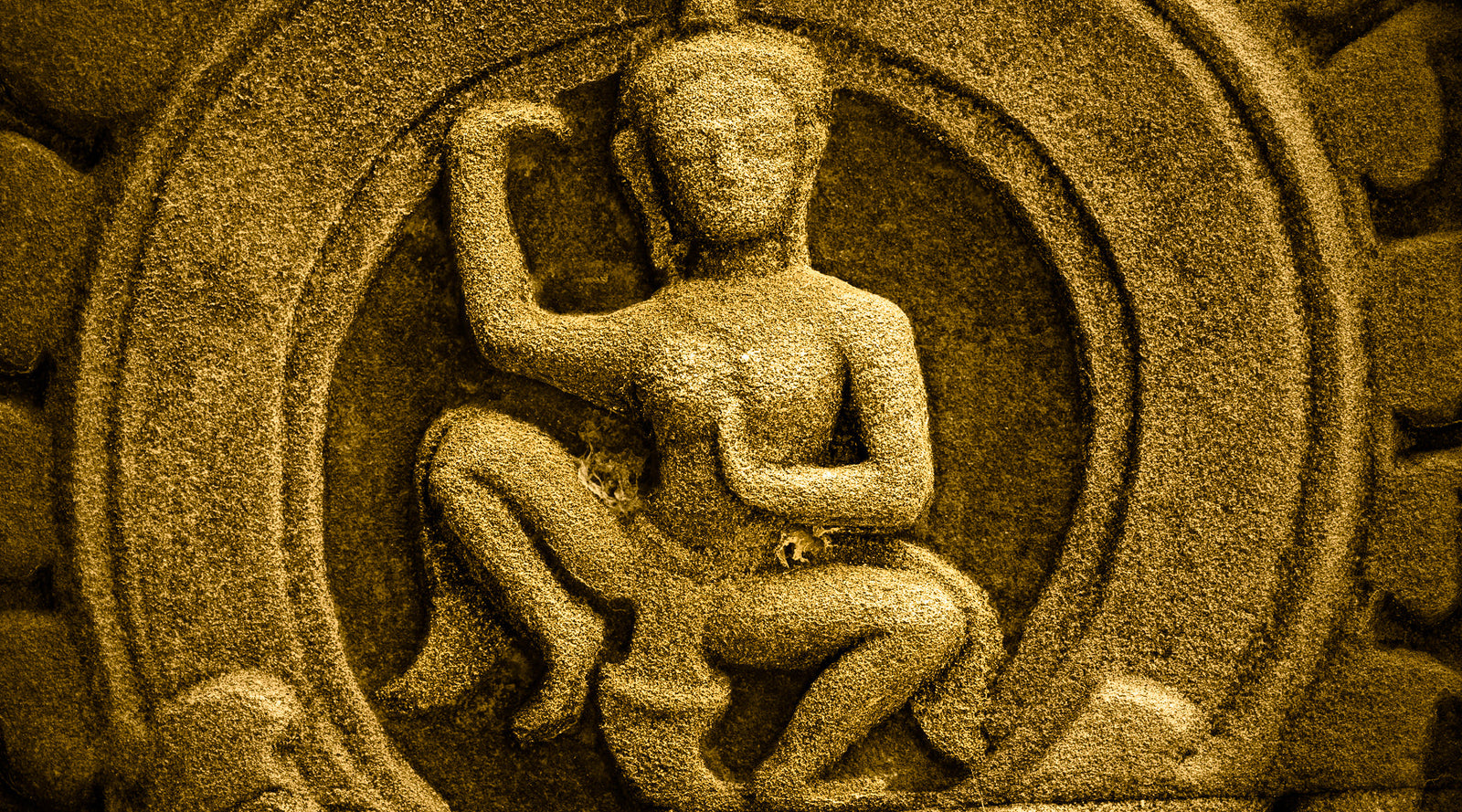
The Dance That Remains
1 min read
A moment carved from dusk returns in gold. She moves, then stays—joy eternal, held not in form, but in the breath before it breaks.
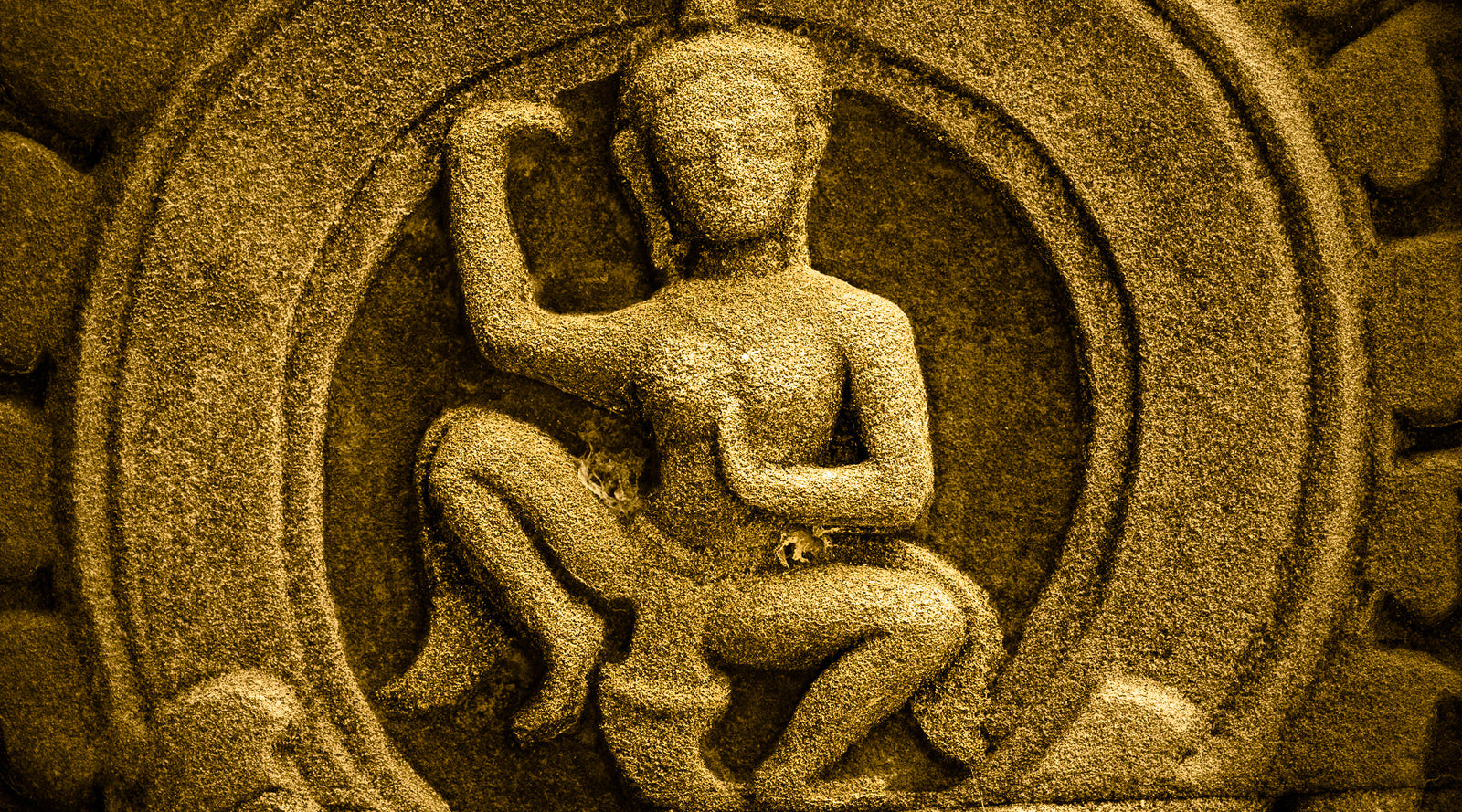
Where Joy Still Breathes
1 min read
Before the shutter, gold pressed into the leaves. A dancer turned inside the stone, listening for the step that never ends.
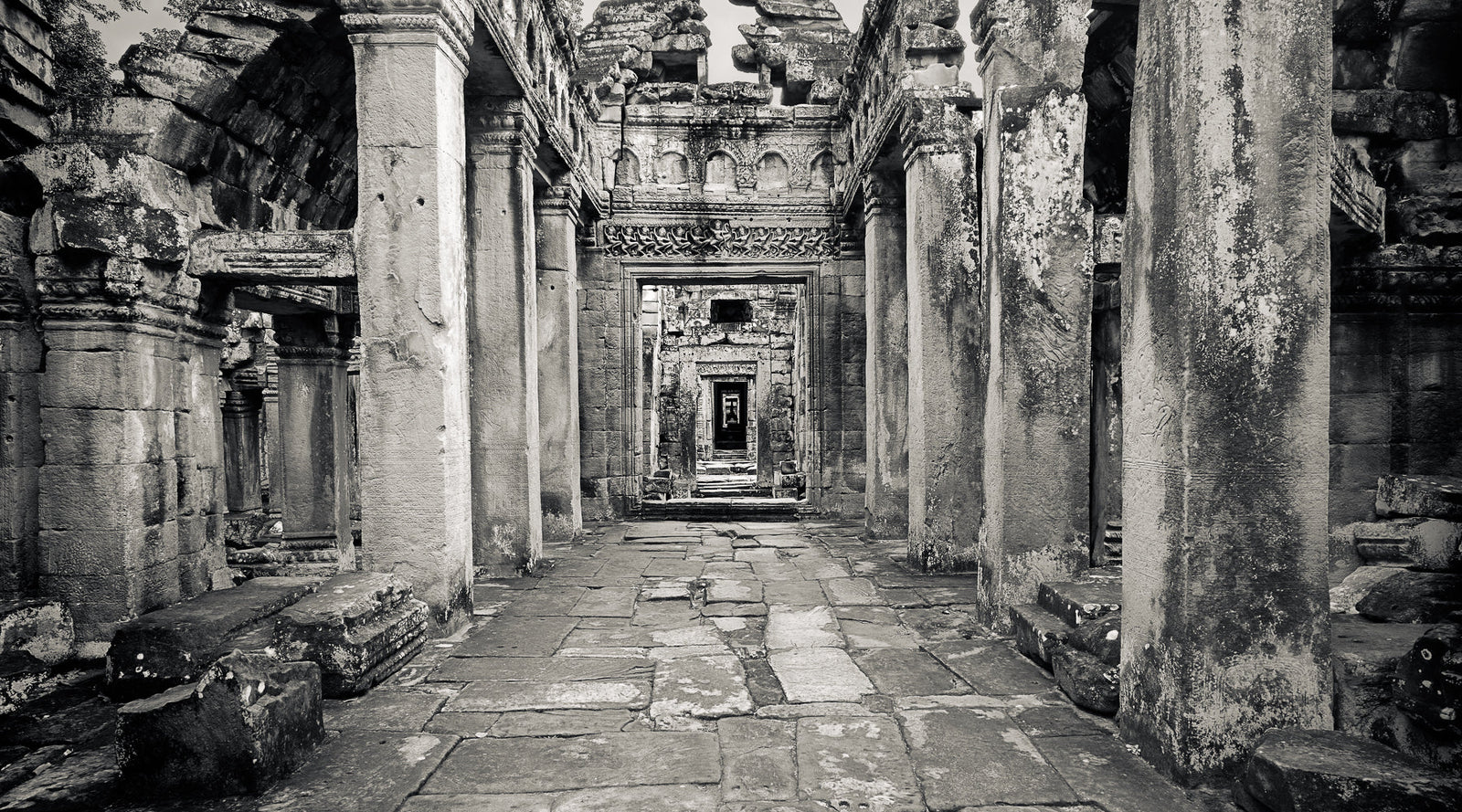
Stone Still Holding Breath
1 min read
Nothing moves. And yet, the breath returns. This haibun brings you to a single moment in the Hall of Dancers, where a wall receives light as if listening—and where silence is never empty.
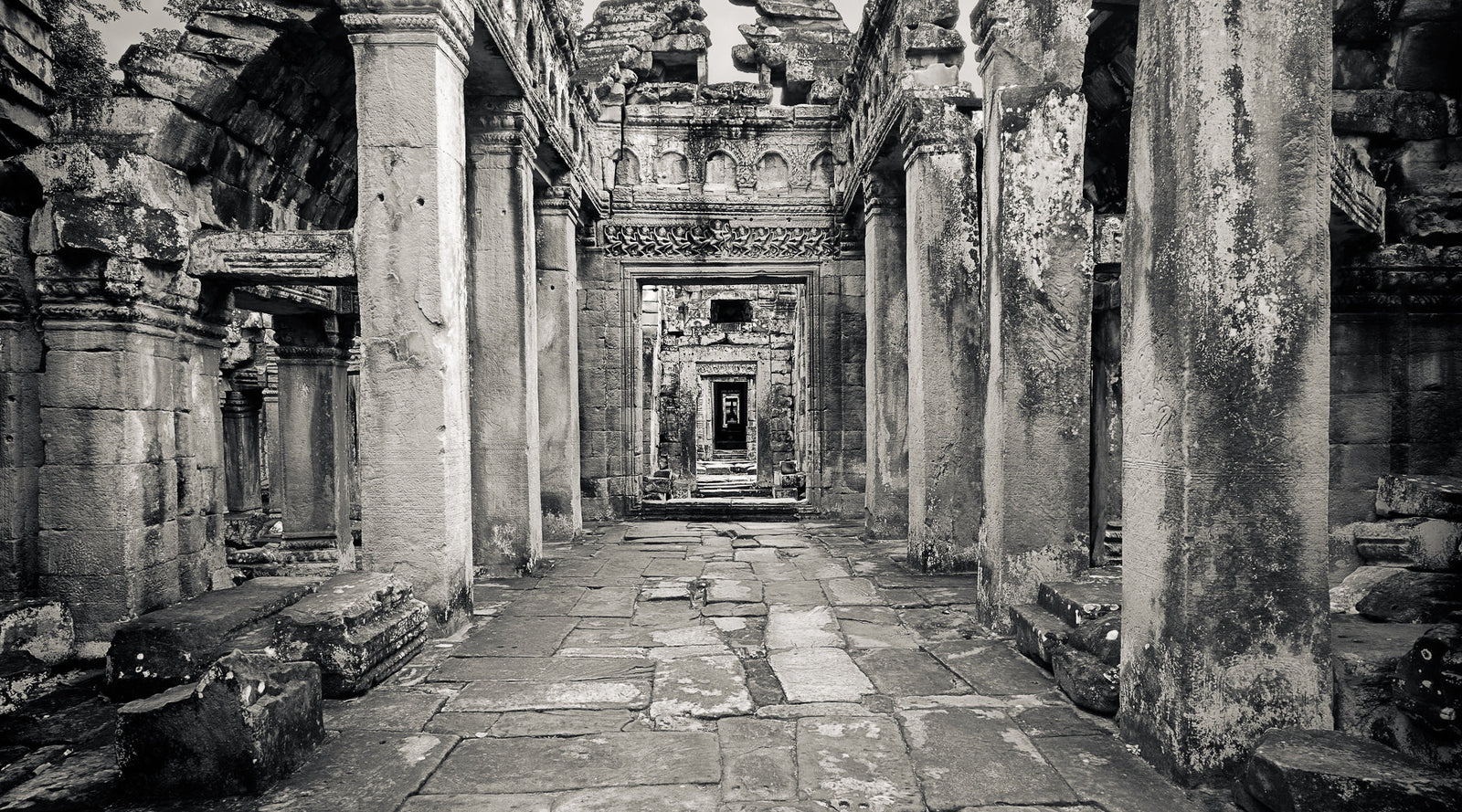
What the Dancers Still Remember
1 min read
Columns lean and light listens. This piece begins in the hush after rain and unfolds into a quiet poem—a meditation on memory, apsaras, and the breath that returns to what still listens.
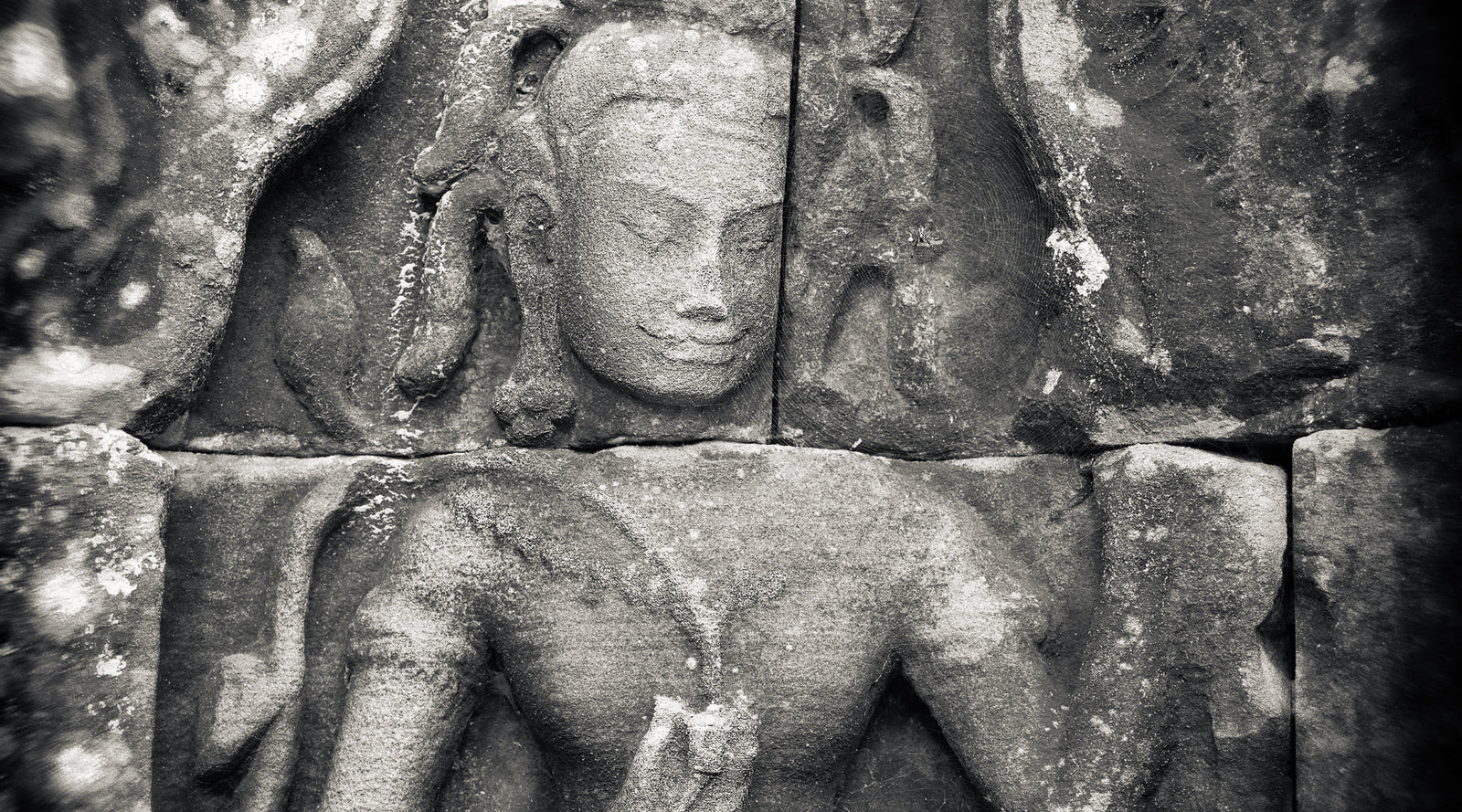
“Before Light Spoke Her Name”
1 min read
Light hasn’t arrived yet, but she is already waiting. One hand holds the lotus. One breath enters the frame. Something eternal listens back.

“When the Lotus Didn’t Stir”
1 min read
She doesn’t move, but something in the stone breathes. The lotus rests in her hand. Light answers a question she never asked. I keep the shutter open.
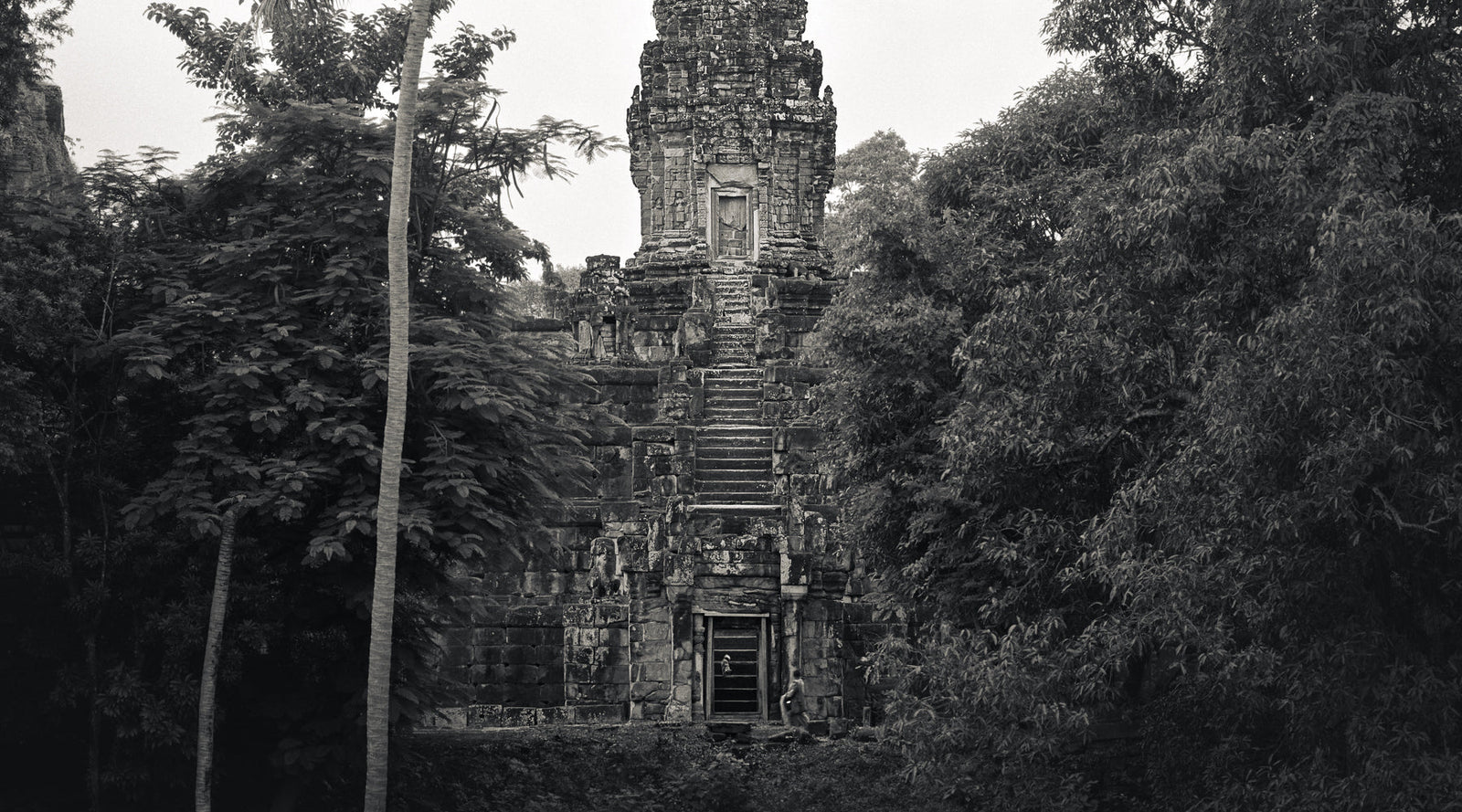
Silence Inhales the Stair
1 min read
Stone inhales, mist lingers, and a single encounter illumines the entire pyramid. This brief haibun lingers in the after-sound of footsteps, inviting the reader to touch the hush that dawn leaves behind.
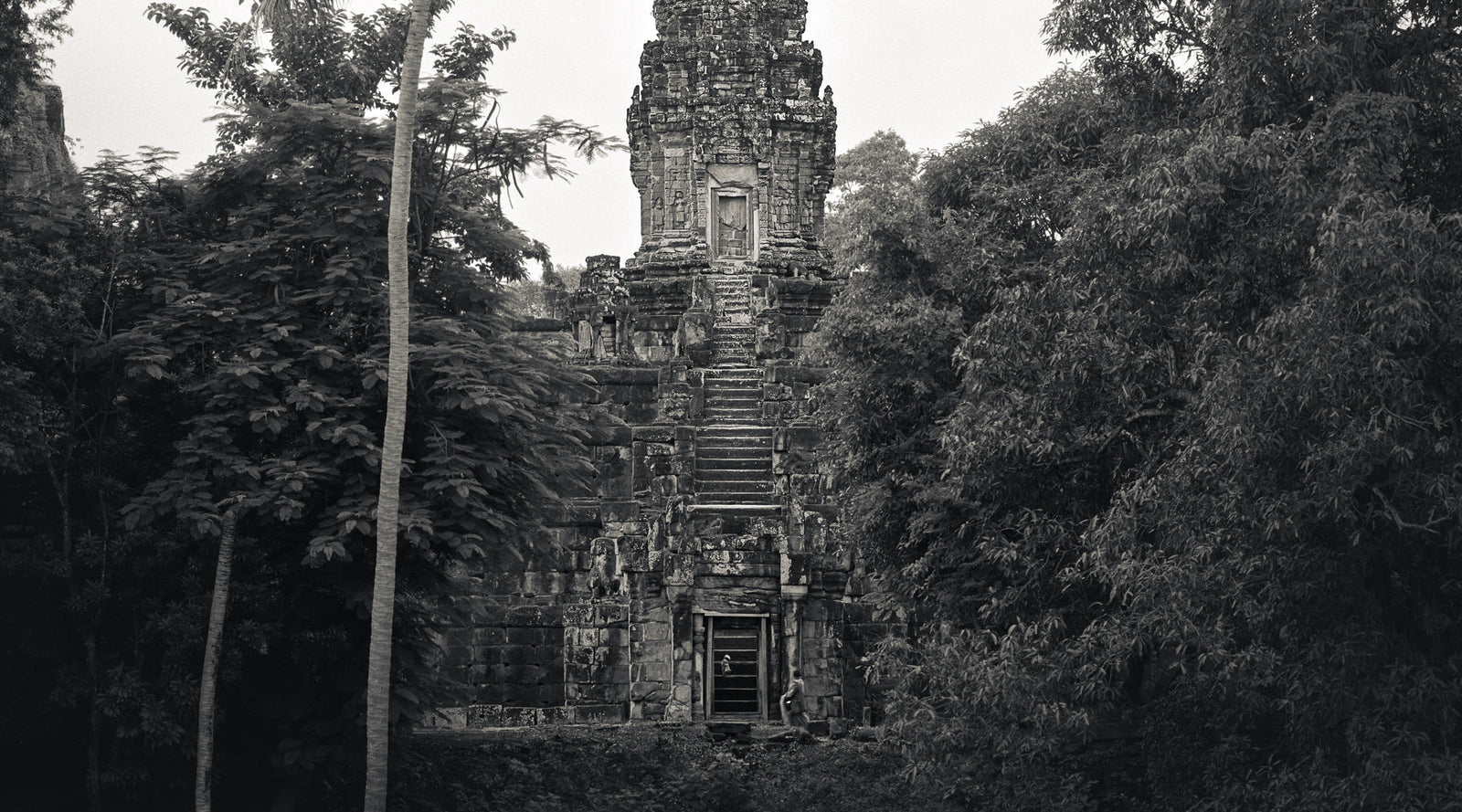
Rainlight Between Paw and Prayer
1 min read
Rainlight slips from palm to stair as monk and dog trade silence for movement. In this lyrical meditation and poem, watch stone discover its pulse and hear how loyalty teaches prayer to walk soft across the morning.

The Hush Before the Image
1 min read
The image begins before the shutter falls. In this quiet haibun, Varro recalls the moment the Deva’s softened form leaned into light—and how the hush became the photograph.

Breath Held in Stone
1 min read
Stone does not defend. It listens. In this lyrical meditation, Lucas Varro enters the hush of the causeway, where the Deva’s gesture becomes a quiet vow held in breath.
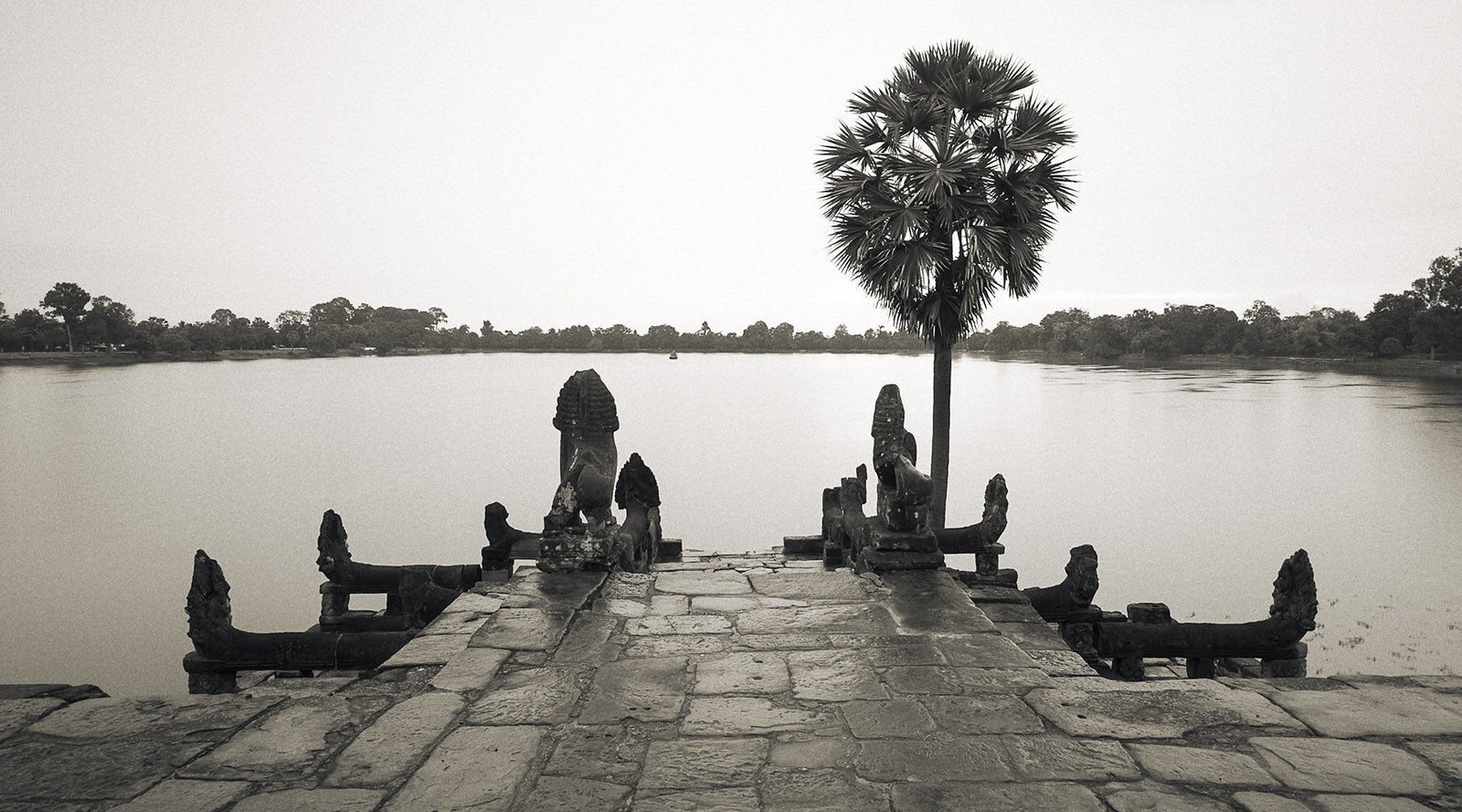
Held Between Realms
1 min read
Between rain and light, the jetty breathes. A lion does not roar. A palm does not move. In this brief haibun, silence becomes both threshold and mirror.
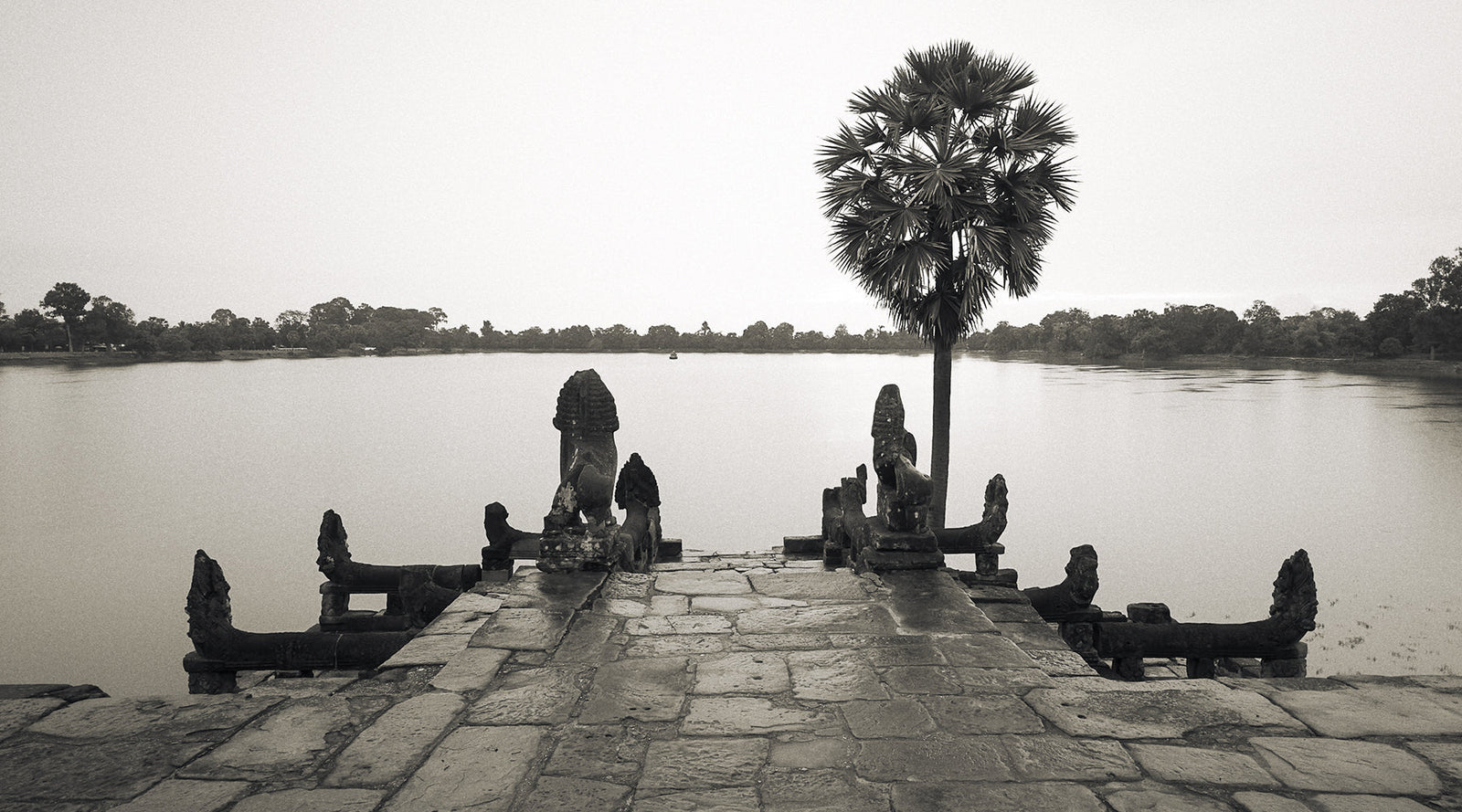
The Lake Does Not Ask to Be Seen
1 min read
At the edge of the royal baray, even the nāga curl into gentleness. This meditation enters the waiting, where water receives sky and the shutter listens longer than thought.
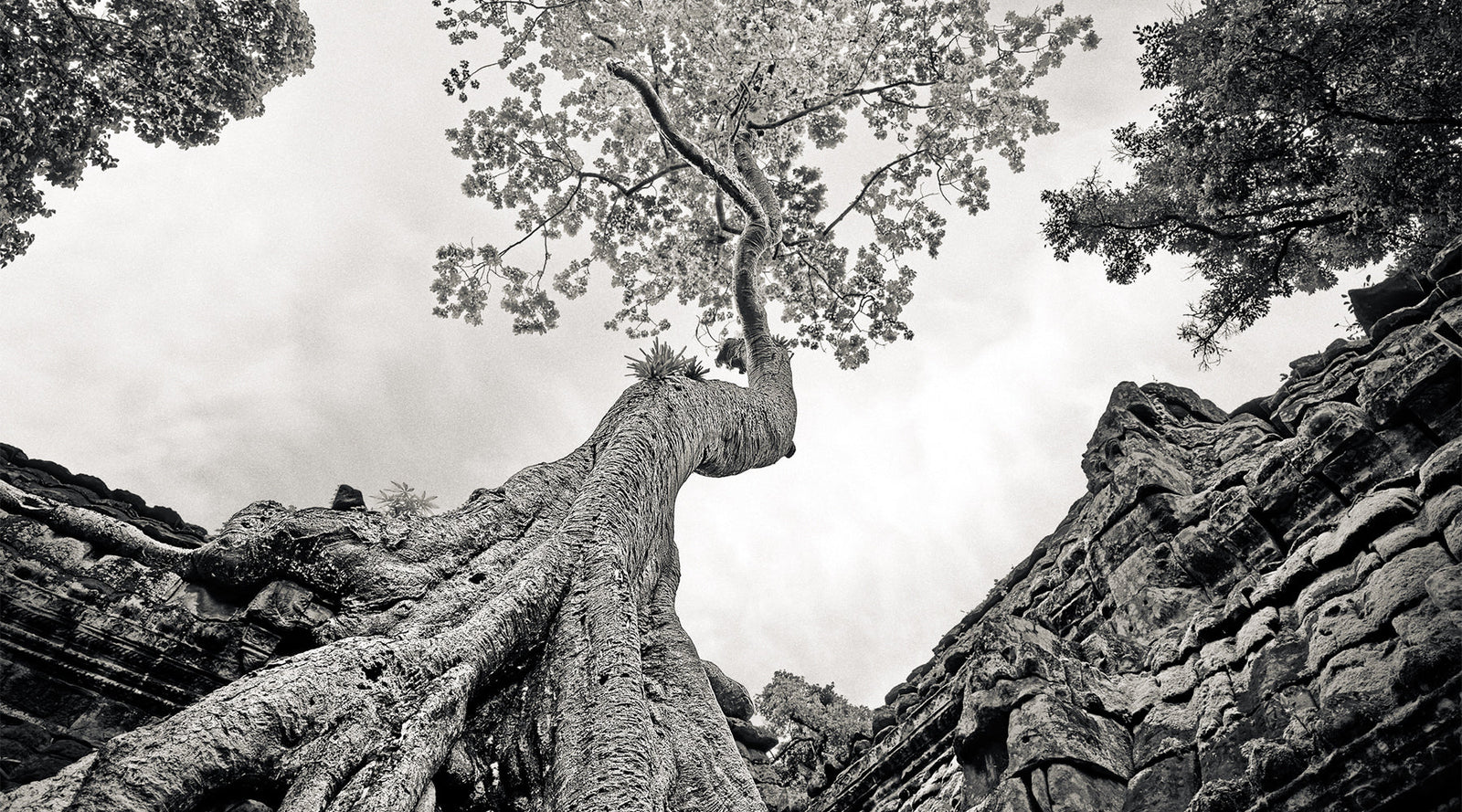
Rain-Chant at the Eastern Gate
1 min read
Dripping rain, breathing root, listening wall—three voices entwine in a brief haibun. An exposure as slow as prayer steadies their union; a haiku distils the vow they share. Step under the arch and feel the chant continue.

Root, Wall, and the Listening Eye
1 min read
A single droplet mirrors jungle and shrine. The artist’s note—let light speak first—unfurls into a poem where shadow leans toward root, and dawn releases itself back to stone. Follow the droplet’s fall, and find what remains poised in mid-air.
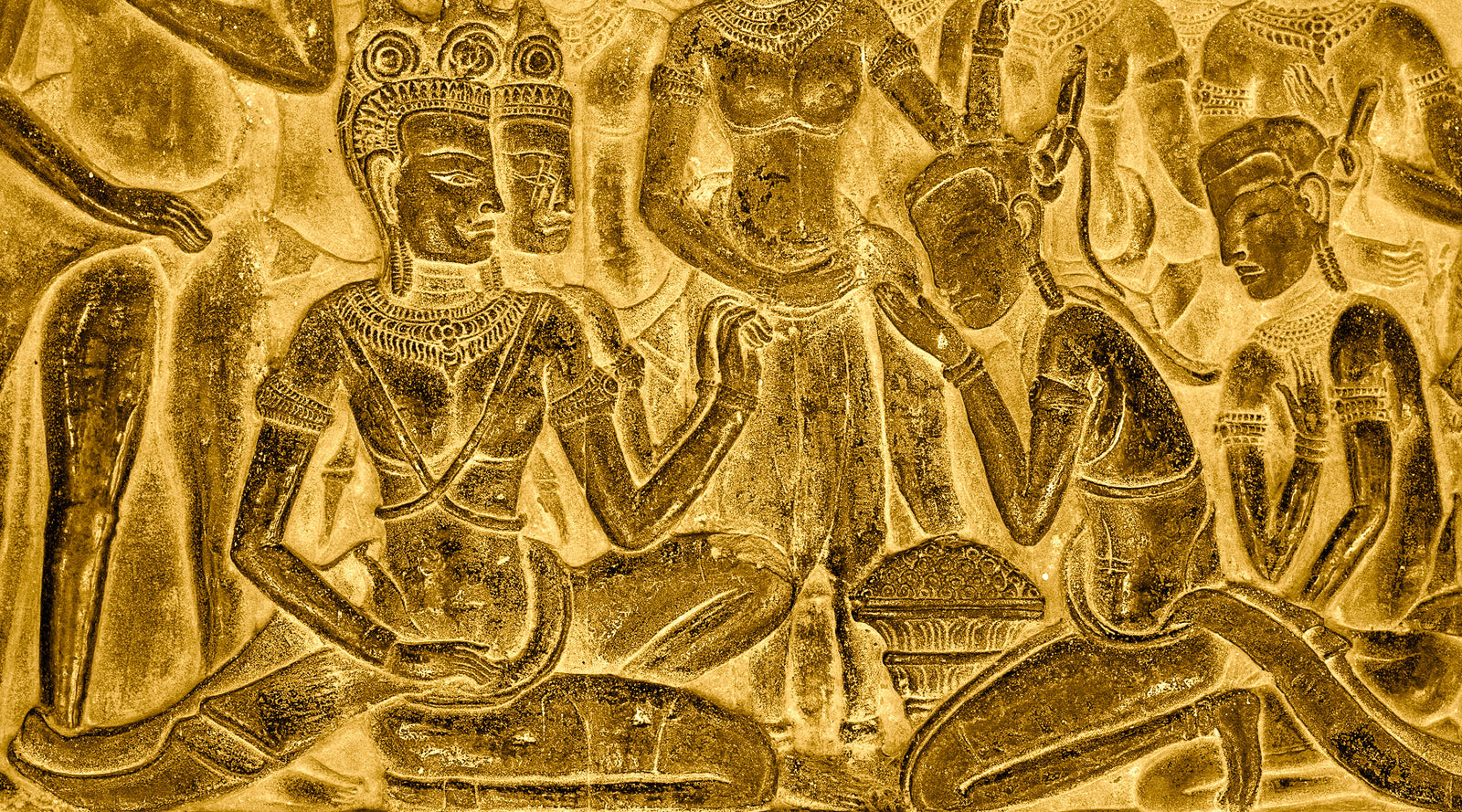
Corridor of Return
1 min read
A brief passage through light and breath. This haibun recalls the corridor’s sacred hush—where one glance, one gesture, and a single kneeling hand become a threshold into stillness.
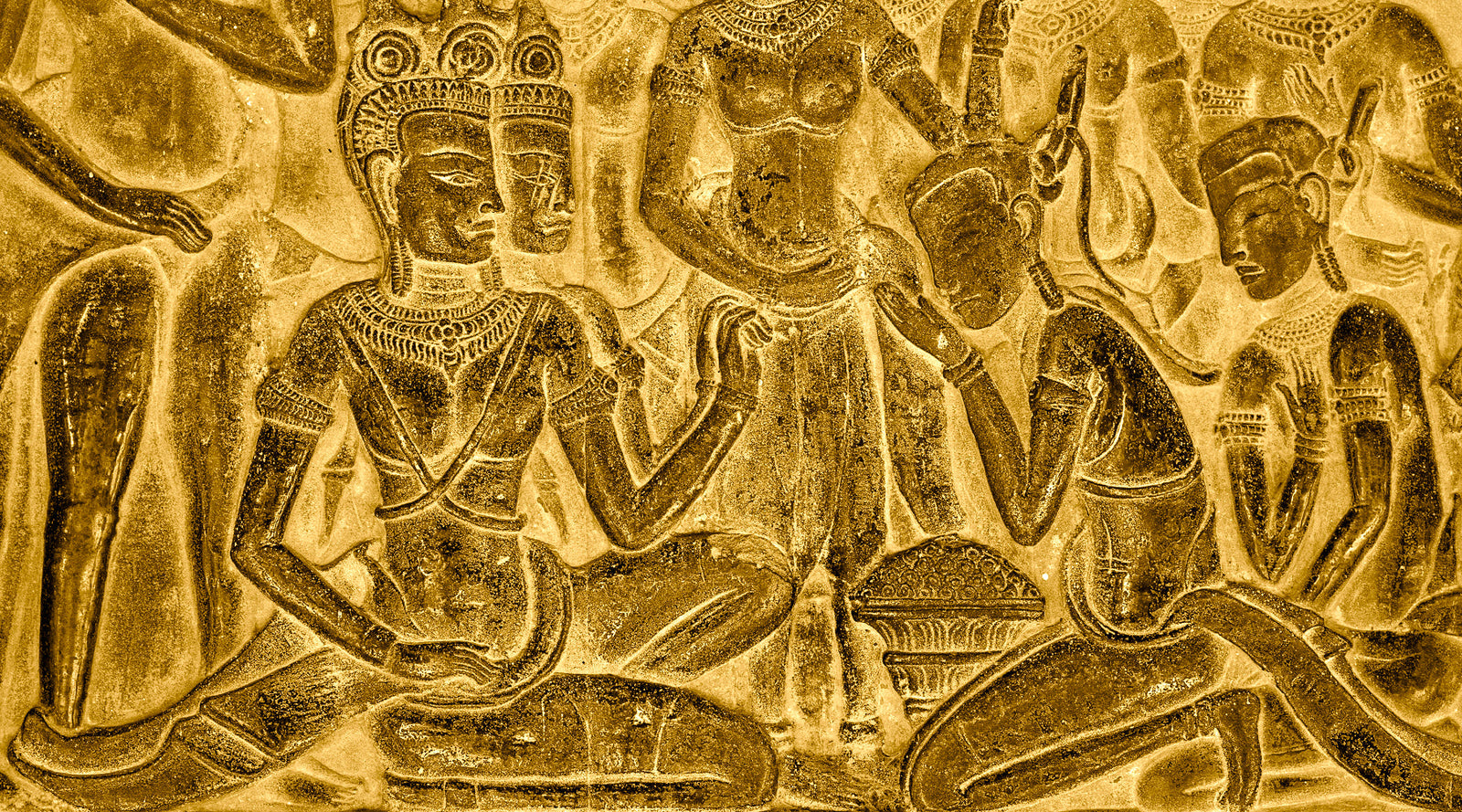
When Gold Became Gesture
1 min read
In this meditation of light and form, the artist recalls how carved hands and jungle gold became one slow gesture. A free verse poem rises from silence to echo what the stone revealed.
Rooms of the Library
Collected Works
Join the Library Circle
Enter your email to receive new pages as they are written — mythic retellings, contemplative essays, and field notes from the temples of Angkor.
A few times each season, a letter will arrive quietly from Lucas Varro, carrying news of new works and books.
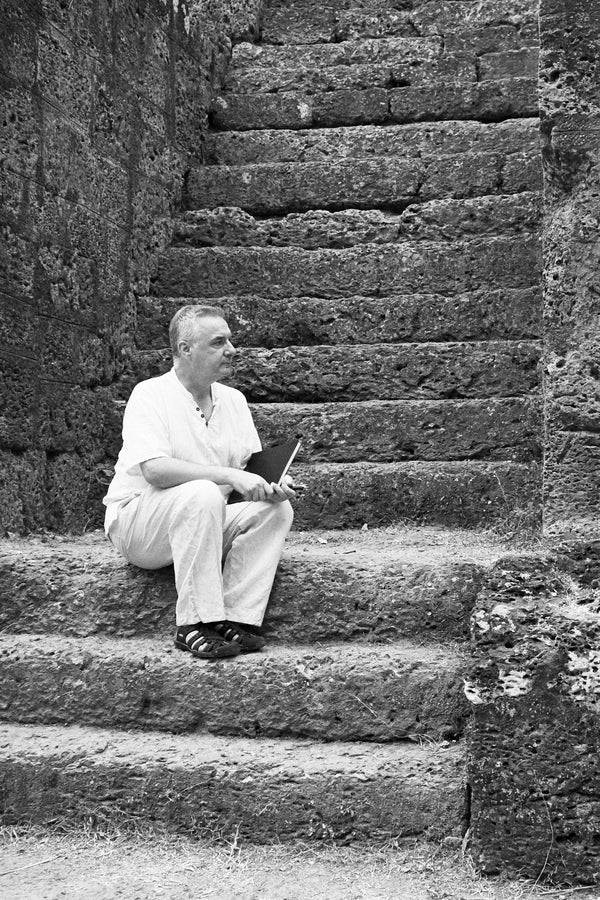
Join My Studio Journal
Receive occasional letters from my studio in Siem Reap—offering a glimpse into my creative process, early access to new fine art prints, field notes from the temples of Angkor, exhibition announcements, and reflections on beauty, impermanence, and the spirit of place.
No noise. No clutter. Just quiet inspiration, delivered gently.
Subscribe and stay connected to the unfolding story.
